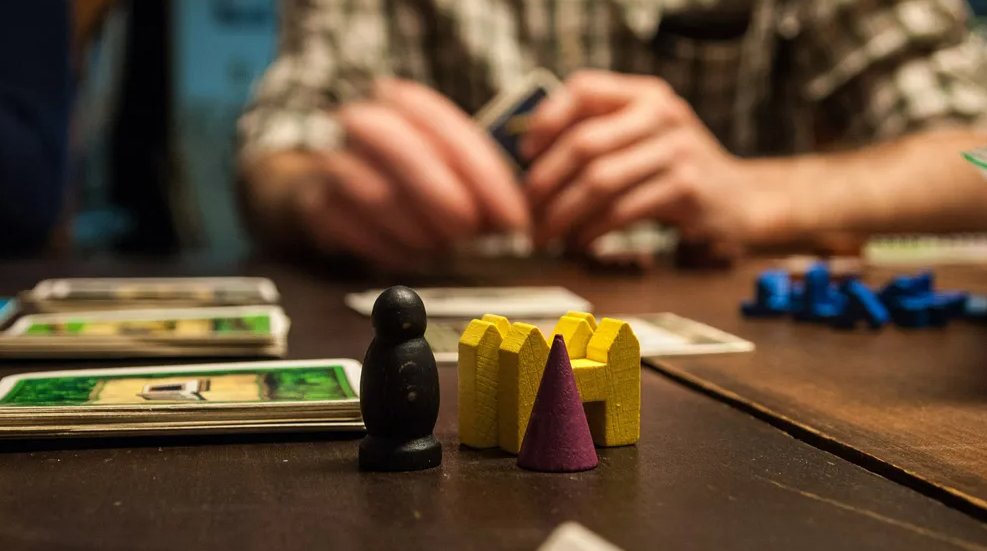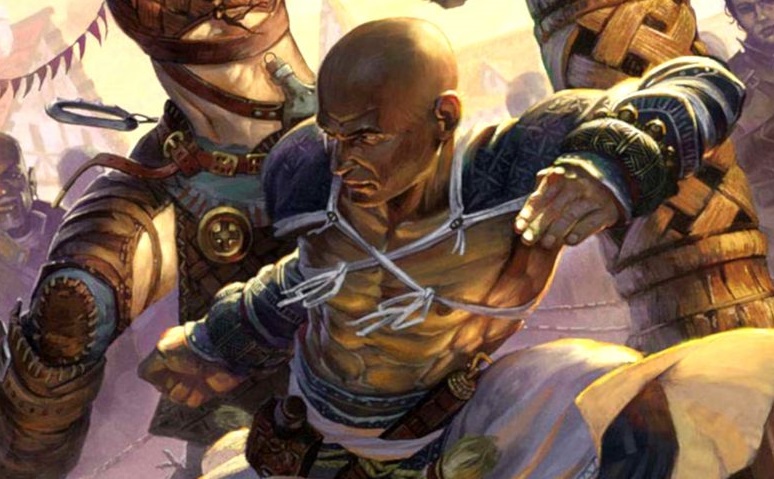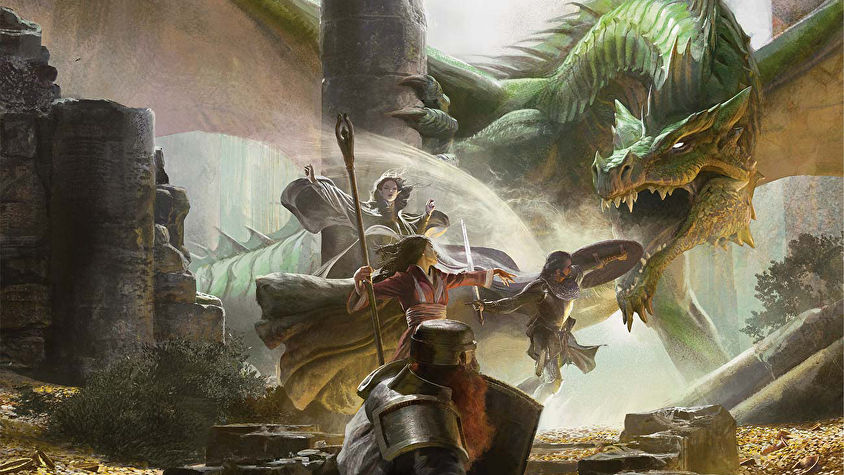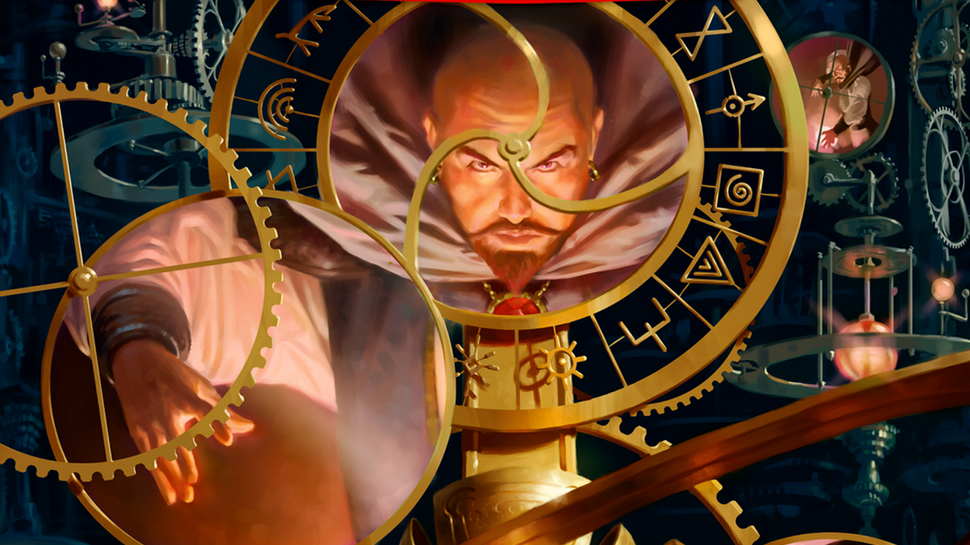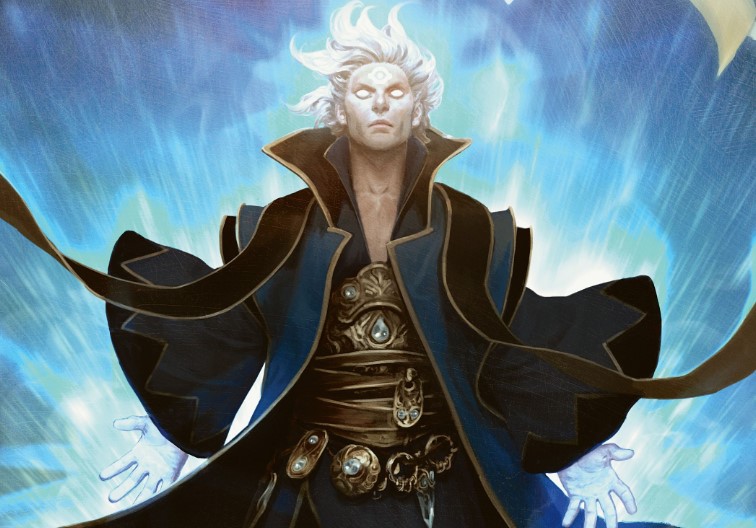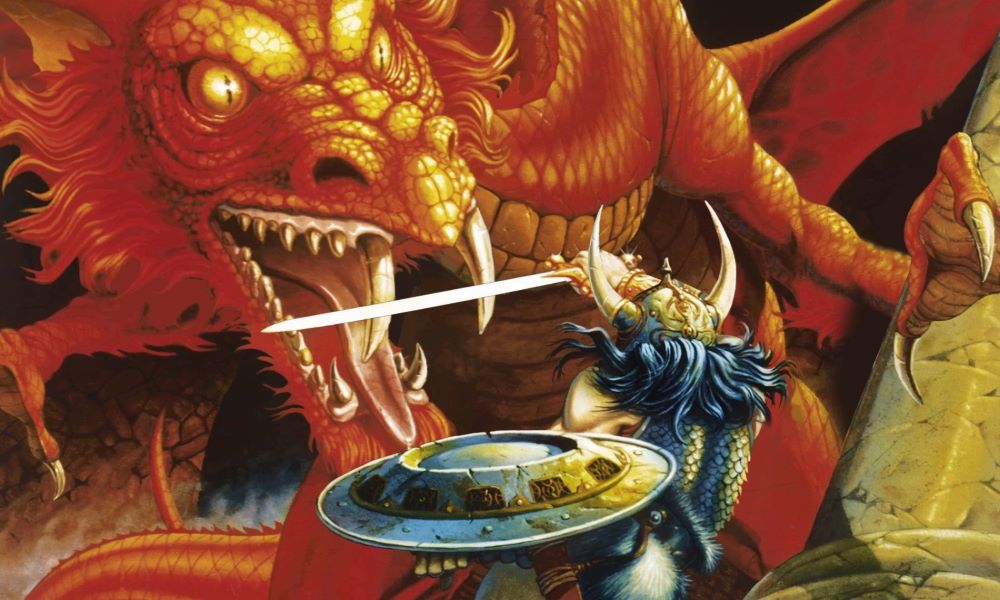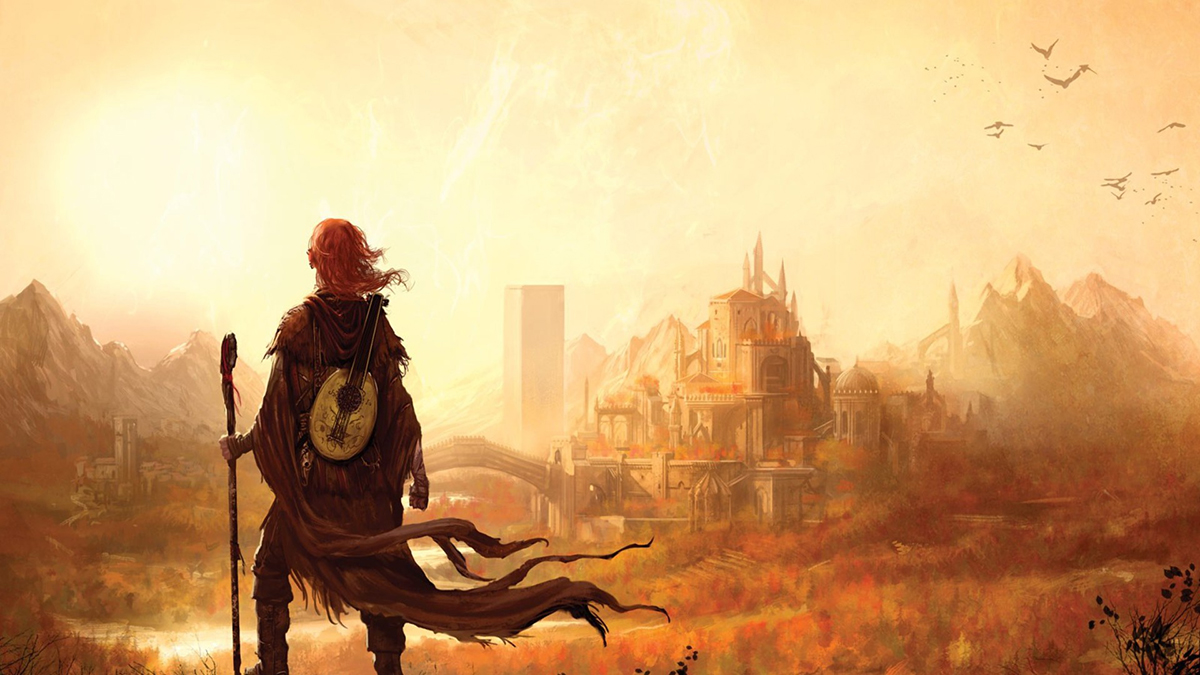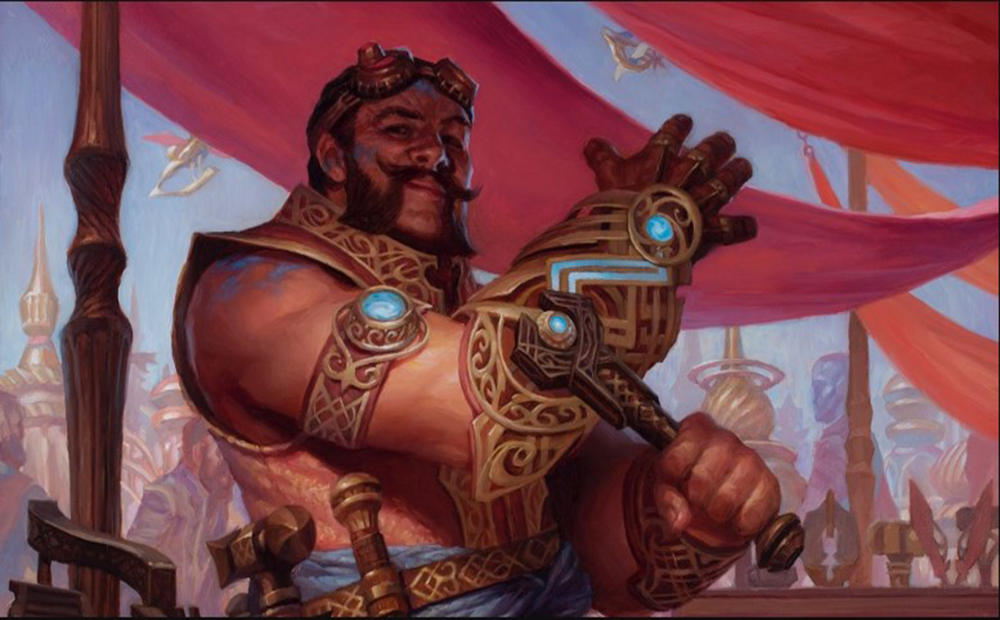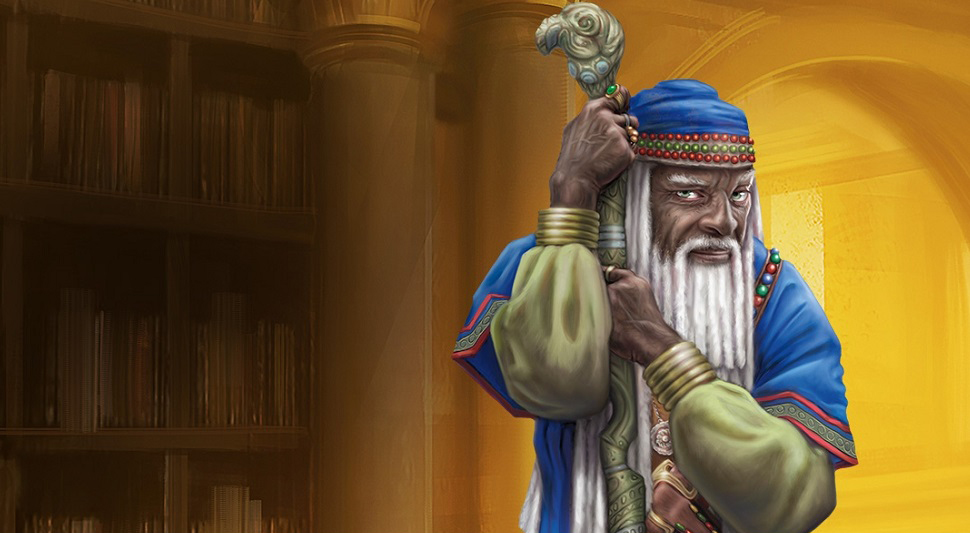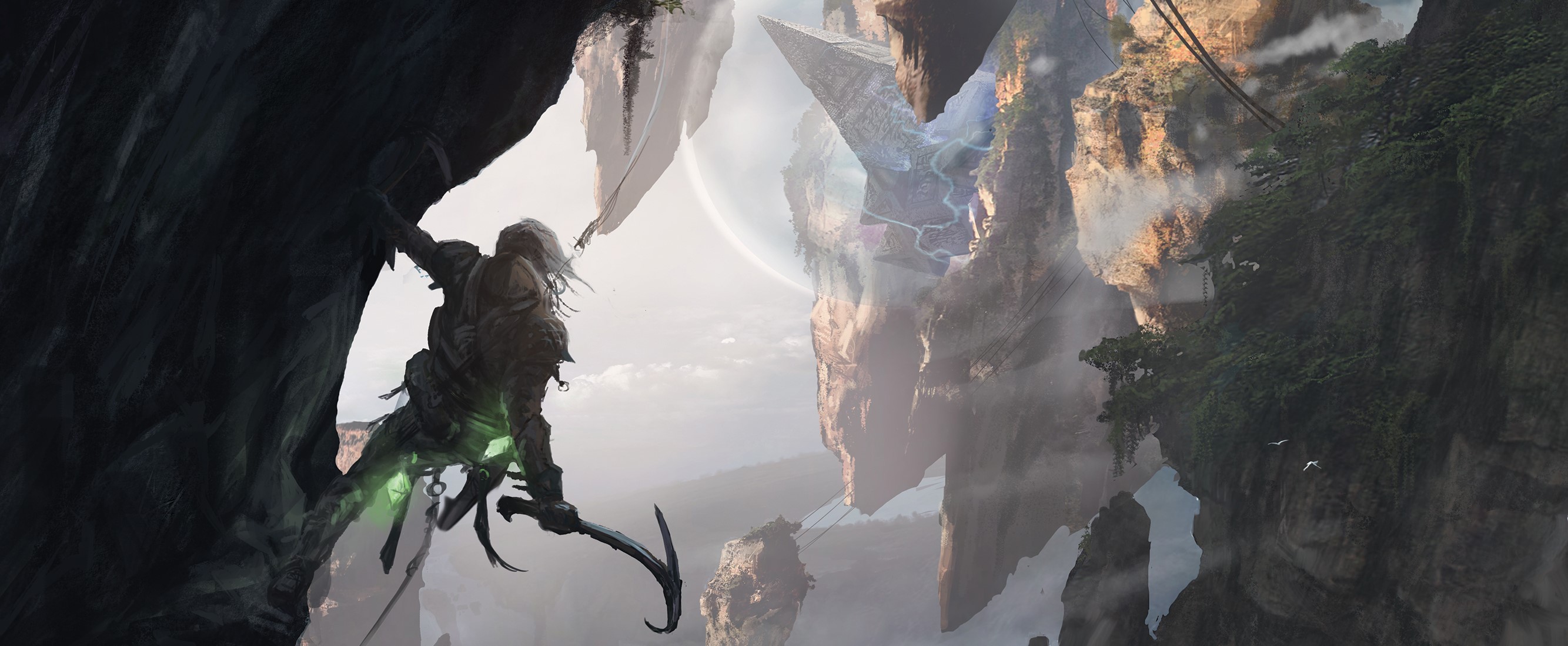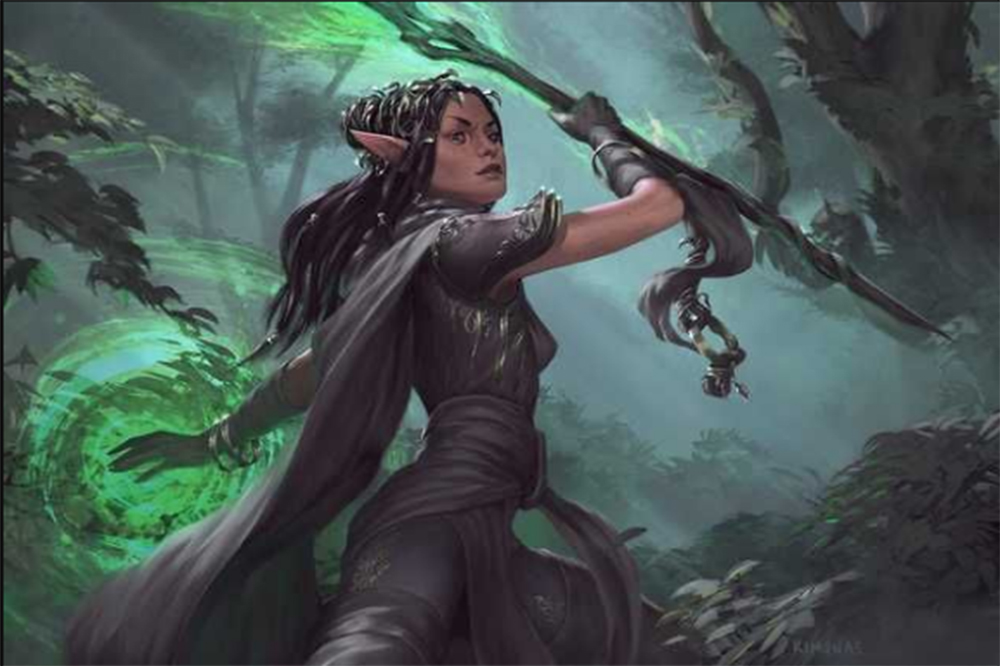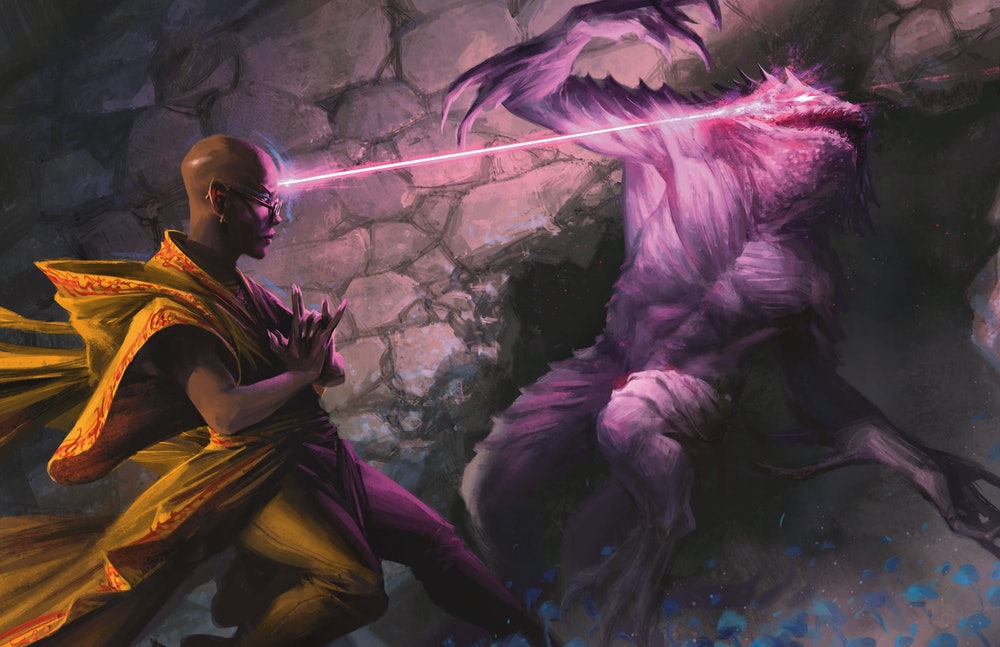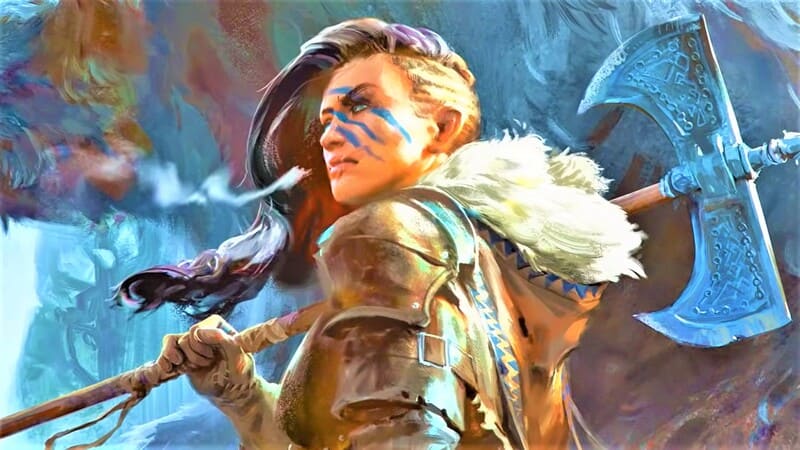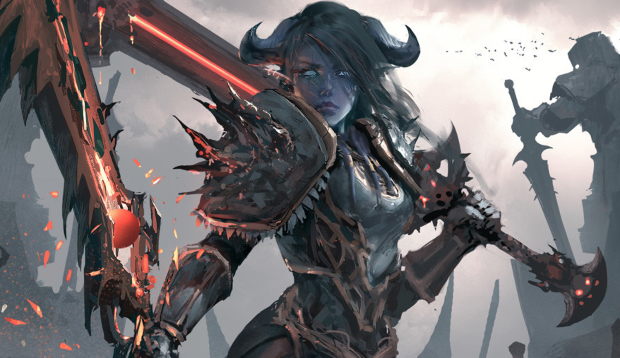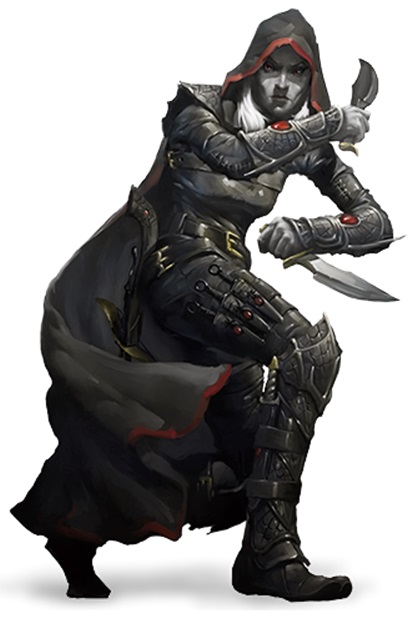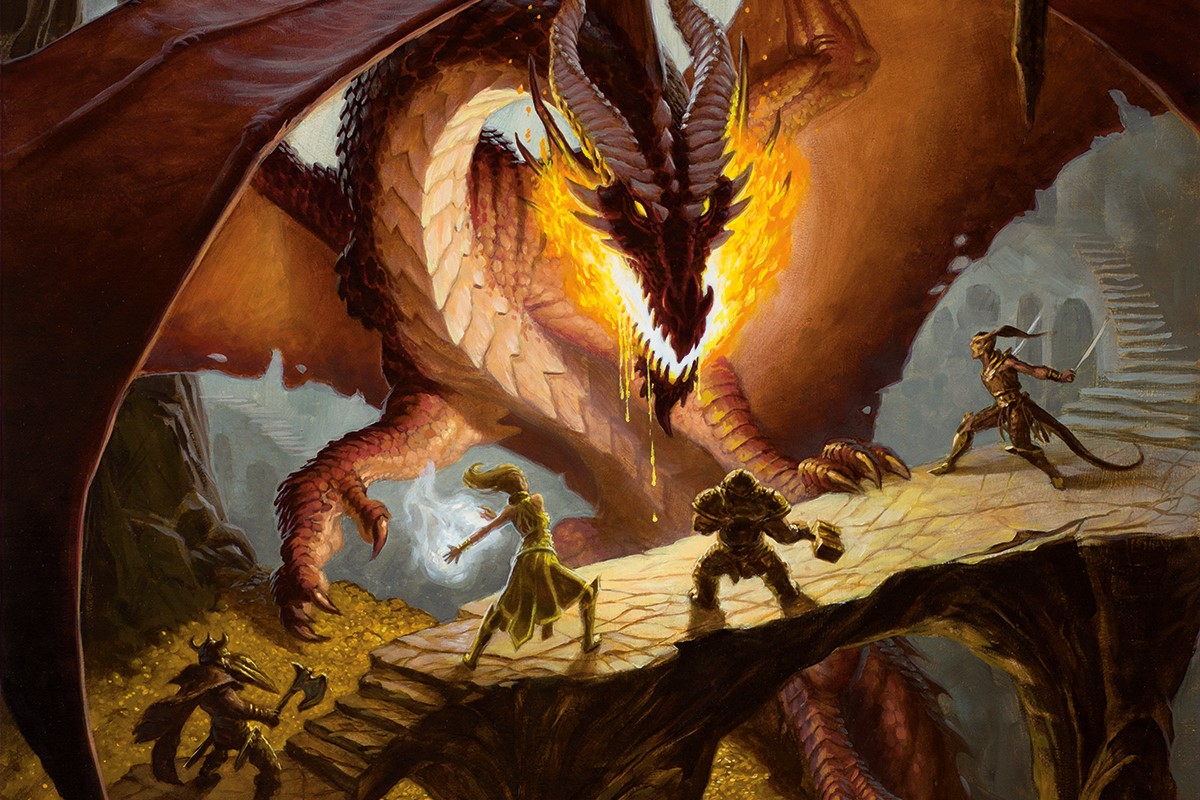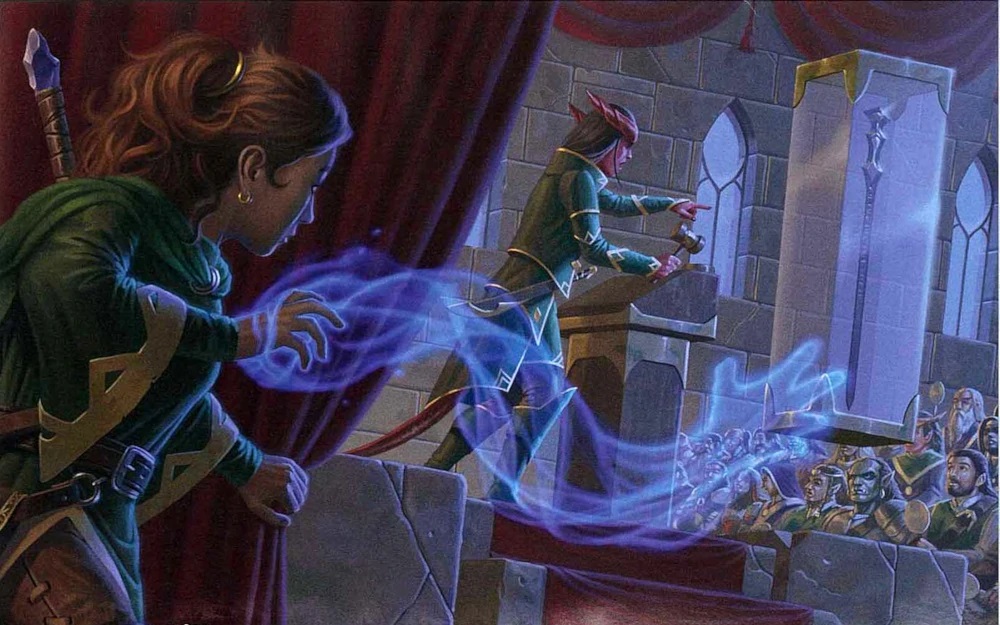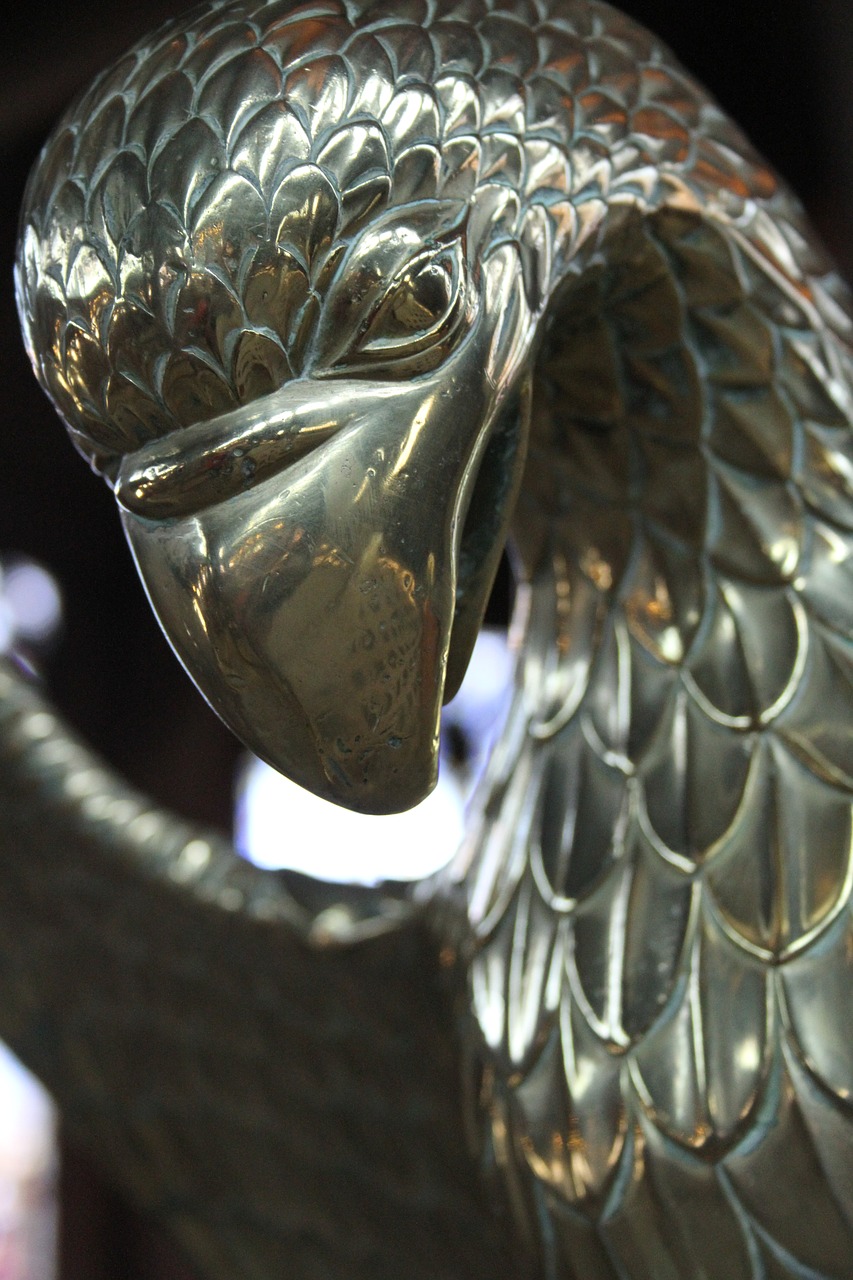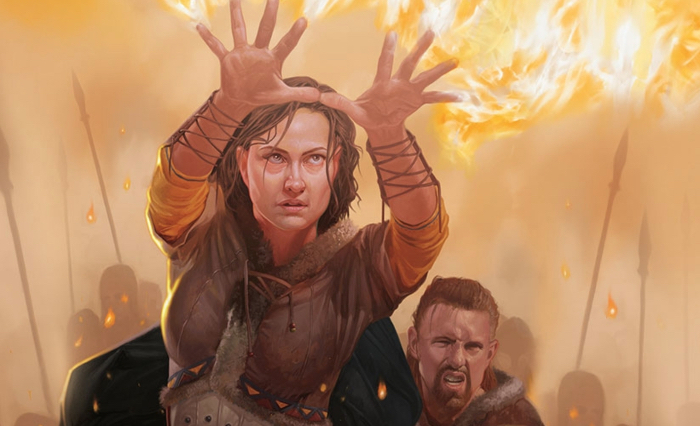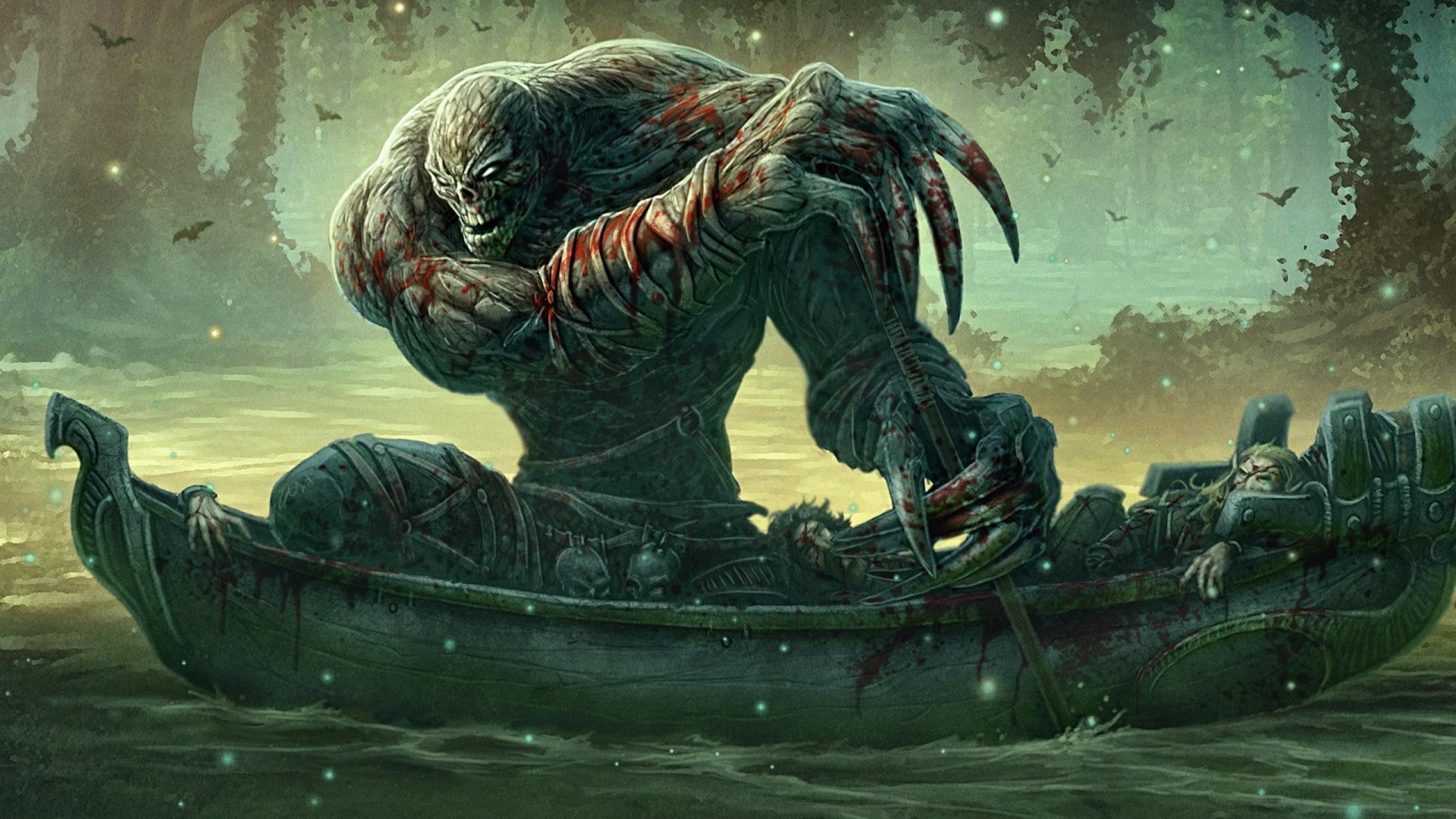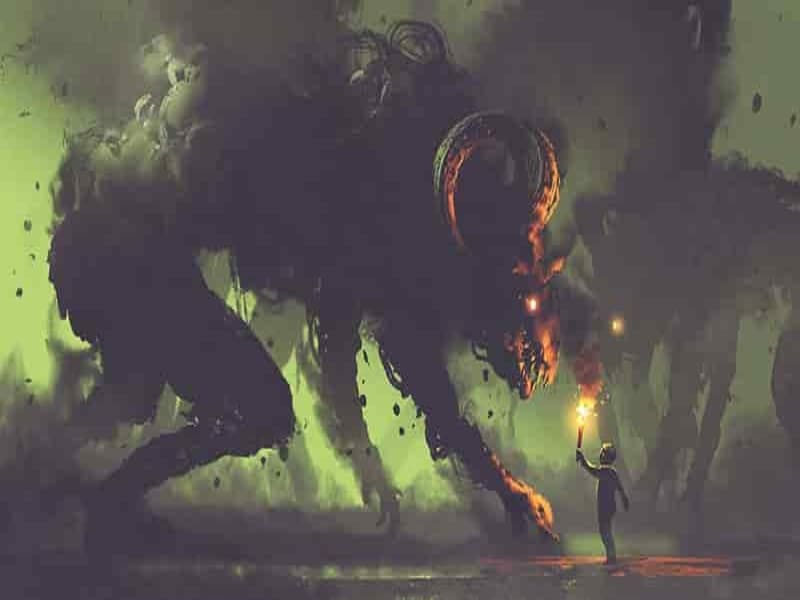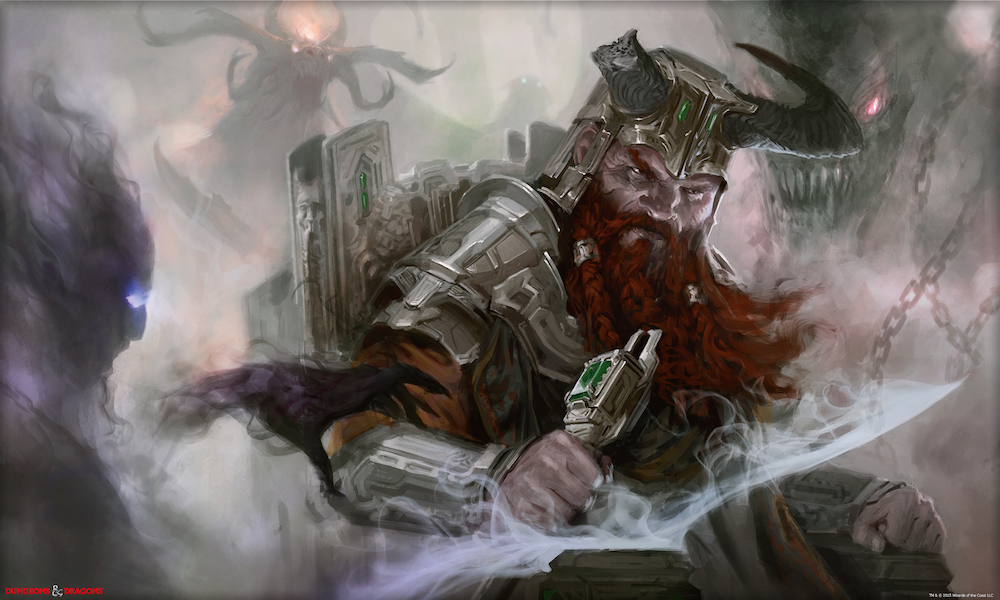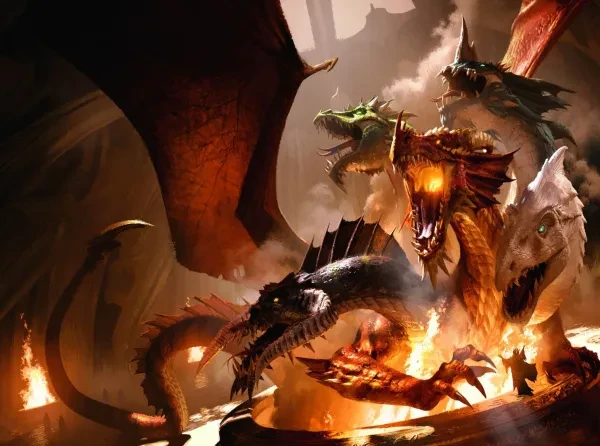
From Heath Ledger’s Joker to the unforgettable Darth Vader, everyone loves a good villain. Things becomes even more interesting when you have the opportunity to fight them face to face while bravely wielding your own sword pencil and an overpowered character sheet, together with some good friends and a giant pizza on a saturday night.
From 1974 until now, Dungeons and Dragons has had enough time to create some of the most hated (or beloved?) villains who will certainly lie forever on the memories of those who met them. And we reunite here a list of the top 25 most unforgettable antagonists of the entire D&D universe.
25. Illithid (Mind Flayers)
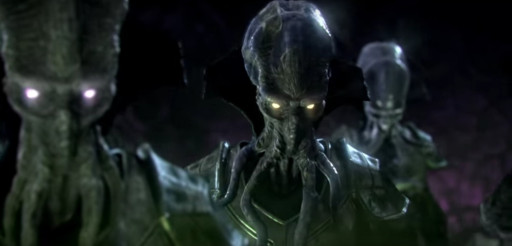
Not a single individual, but as an entire race, the Illithid (or Mind Flayers) dwell within the nightmares of many player characters. An ancient race, the Mind Flayers travel across the multiverse using their psionic powers to dominate and enslave entire worlds, meanwhile devouring a brain or two in the process. Just the thought of their slimy tentacles sliding your character’s face while preparing to suck their mind out of their skulls gives me the creeps!
- As plane travelers, nowhere is really safe from their influence;
- They inhabit the depths of the Underdark, where they are respected by drows, duergar, beholders and all sorts of “nice neighbourhood”;
- They have psionic abilities, which are amongst the most amazing powers in the D&D universe;
- As pure representatives of evil, all Illithid see themselves as a superior race, with a right to dominate other species;
- Their thematic is extremely alien (they put larvae to reproduce) and creepy, giving space for some awesomely bizarre adventures;
As for their powers, Mind Flayers can have several variations, the most common of those showing:
- Darkvision, Telepathy and Magic Resistance;
- Can detect thoughts and levitate at will;
- Can cast dominate monster and plane shift;
- Can emit a powerful Mind Blast which deals 4d8+4 psychic damage and might stun in a 60-foot cone!
Mind Flayers can be terrifying opponents, being masters of manipulation, spellcasters, psionic and highly intelligent. They are also never found alone, always followed by their slaves and an occasional intellect devourer or two. Quite the fight!
24. Dragotha, the Death Dragon
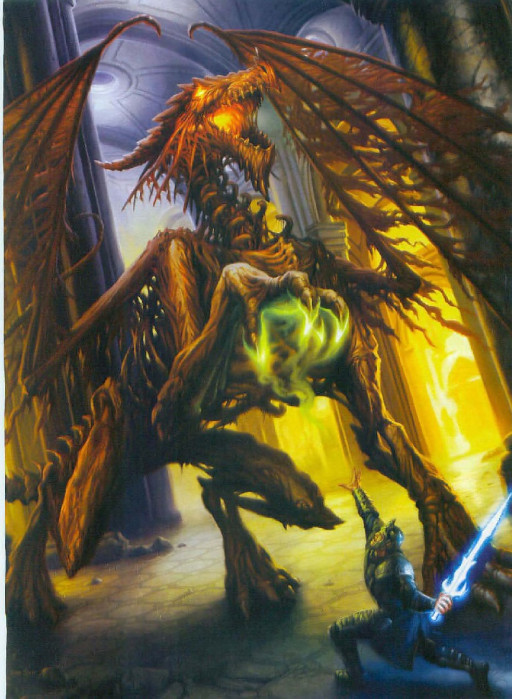
As a former consort of Tiamat, Dragotha used to be a powerful ancient red dragon, but it was more than 2000 years ago. After defeating one after another of his rivals, powerful dragons wanting his position beside Tiamat, Dragotha one day was challenged and, again, slayed a dragon who was secretly Tiamat’s son. Fearing the fury of his goddess, Dragotha fled to Oerth. That’s when things start to get interesting.
Knowing that Tiamat would send her servants to end his life, Dragotha made a pact with Kyuss, the demigod of death, promising to serve him in exchange for eternal life. As Tiamat’s servants came after him, Dragotha was slayed and, after that, risen as a dracolich by Kyuss. The dragon felt betrayed by the Worm that Walks, and retired to an isolated canyon to plan his revenge.
Every century or so, Dragotha comes out of his hiding to release his fury upon this world, meanwhile trying to plan the destruction of Kyuss, Tiamat and their respective cults.
Dragotha’s lair is one of the most terrifying places in the Greyhawk setting, being crowded with powerful undead under the dracolich’s control, and containing several necromantic spells ready to drain the life of the unprepared adventurer.
- Dragotha is a dracolich, meaning he is a dragon and an undead at the same time;
- He was the consort of Tiamat, and was one of the most powerful ancient red dragons to exist;
- Dragotha is more than 2000 years old;
- The dragon is motivated by vengeance and hatred, like many great villains, but he also has an incredible background story;
Dragotha’s stats were published on the Dragon magazine #134, but this is the only “official” information on the dragon, and for AD&D. Wizards of the Coast later released an adventure called Dragotha’s Lair, which featured details about it’s lair and the dragon itself. Amongst Dragotha’s special powers and characteristics, we can include:
All the special resistances of an undead, plus the endurance of a dragon;
- A Death Wind breath capable of melting the flesh of living beings, leaving behind clothes, bones and the heart;
- A necromantic link to any living creatures around him, letting him regenerate 5 hit points per round (In the old rules. A homebrew version makes it 10);
- Dragotha can’t be killed if his body is not entirely disintegrated;
- Have I mentioned the hordes of undead walking around his lair?
All in all, Dragotha is an excellent enemy to test even the mightiest of parties.
23. Kyuss, the Worm that Walks
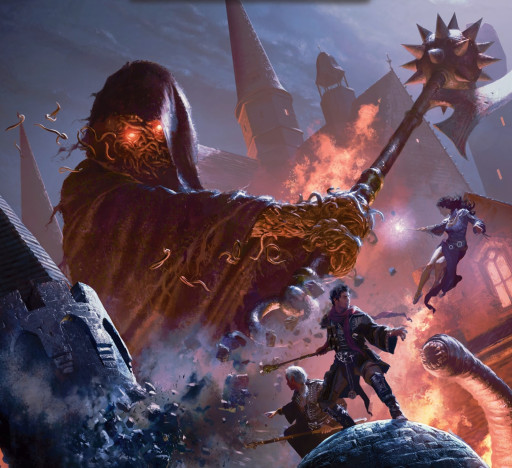
More known by his creations, the Spawn of Kyuss, Kyuss is an Elder Evil. According to the ancient prophecies (and many of them have been confirmed by his cultists), he will be the Herald of the Age of Worms, a time when the undead will rise and destroy the world. Also known as the Bonemaster, the Wormgod, and the Worm that Walks, his symbol is a skull erupting with writhing green worms.
Kyuss was once a high priest of Orcus, infamous for plundering corpses from necropolises to create his first spawns. He was exiled from society, and then became the prophet of a wicked cult who believed in the dreaded Age of Worms. They moved to Wormcrawl Island and found ruins of a dead civilization, which contained metal plates holding terrible secrets but also confirming every one of his prophecies.
Kyuss then used the secrets discovered in the inscriptions and sacrificed his entire congregation in order to transcend mortality. He thus became a demigod, but the process cursed him to be bound to the ruins forever. Now he seeks to spread his spawns across the world of Faerûn, while waiting for the opportunity to leave the island and bring forth the Age of Worms.
The Worm that Walks is seen as a 30 foot (9 meters) tall giant composed of a shifting mass of maggots and worms;
- He can increase or decrease his size at will;
- Infamous for creating the Spawn of Kyuss, a type of zombie who spreads its condition through worms;
- Was the responsible for turning Dragotha into a dracolich;
- Is an Elder Evil. AN ELDER EVIL!
- Kyuss doesn’t need to be fought personally to make for an incredible villain, since his spawns and story “speak” for him;
Unfortunately, Kyuss stats were never officially published, though a homebrew description of the Worm King can be found here.
22. Eclavdra, Exarch of Lolth
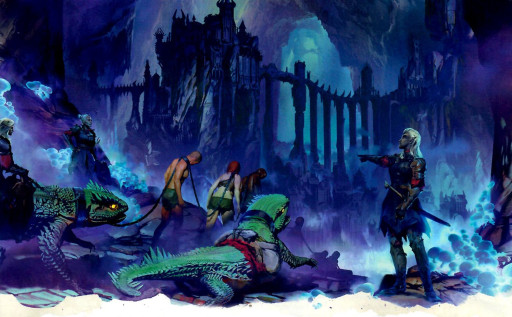
How do you call a drow priestess of Lolth who betrayed her mistress and was lately rewarded for that, has been a servant to the Elder Elemental Eye, a consort of Graz'zt, an ambassador of Graz'zt and Iuz, and the main antagonist in several adventures and novels of the Dungeons and Dragons universe? I call it an astonishing villain!
Eclavra is a drow of exceptional beauty and ambition who is a major villain in Gygax's Gord the Rogue novels, and first appeared in G3: Hall of the Fire Giant King, being the first drow ever named in D&D. After betraying Lolth not once, but twice, she won her place at the side of the Demon Queen, proving she had intelligence and guile to outwit a cunning goddess.
- Eclavdra has been given immortality and divine power as an Exarch of Lolth, as a reward for betraying the goddess twice (since Lolth is Mistress of Lies);
- She has a powerful tentacle rod, a relic of her days serving the Elder Elemental Eye;
- She is described as being incredibly beautiful, but with terrifying cruelty and total lack of compassion;
- She is a smart villain, who is always scheming from behind the scenes and manipulating others on her favor;
- Eclavdra allied herself with Graz'zt against Lolth in order to grab power in the Abyss, only to later seduce him and betray him to regain the favor of Lolth;
- Eclavdra acted as an ambassador at the court of Iuz, the Evil;
Eclavdra’s stats can be found at Lolth’s entry in the Monster Manual 3 of the 4th edition of D&D. Her status of Exarch makes her a powerful foe, but it is her guile and charm that make her such a special villain to face on your campaigns.
21. The Xanathar
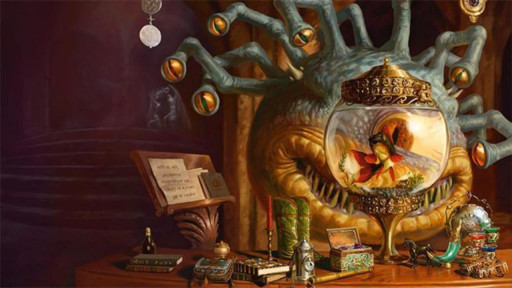
If you’ve been playing the 5th edition of Dungeons and Dragons recently, you have probably heard of the Xanathar’s Guide to Everything. THIS is the Xanathar we’re talking about.
If beholders by themselves make incredible antagonists, The Xanathar overcomes all expectations by being the most renamed beholder in all of Faerûn. Or beholders, since The Xanathar is not actually a name, but a title. The Xanathar is the leader of the Xanathar Thieves’ Guild in Waterdeep.
In the beginning, a beholder just called the Eye founded the Agents of the Eye criminal organization and led it from the background, his existence almost forgotten. He then discovered another beholder leading the Xanathar Thieves’ Guild, stole his precious notes, killed him and unified the organizations, assuming control of all criminal business in the Undermountain and subjugating every other beholder in the region under his command.
After the death of the Eye, several other beholders assumed the title of The Xanathar, some more paranoid or tyrannical than others. But The Xanathar will always be a name to be recognized and respected as one of the crimelords of greatest power in the Swordcoast.
- As a leader of an immense and well organized guild, The Xanathar is one of the most powerful entities in the Swordcoast.
- A name to be respected, The Xanathar is rarely seen face-to-face, usually sending emissaries on his place to do his business;
- Many activities of slavery, smuggling and pacts with entities from the Underdark taken in Waterdeep lead directly to his guild;
- With all the knowledge at his disposition, adventurers might need The Xanathar’s help to solve some complex situation, which leads to them owning him favors and granting him even more power;
The Xanathar’s game stats are actually not important, since it is the name behind it that really represents villainy. But if the DM so wishes, any variant of the beholder might suit his needs.
20. Halaster Blackcloak, the Mad Mage
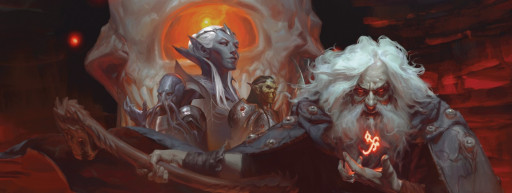
Deep under the city of Waterdeep lies the Undermountain, an enormous and extremely dangerous dungeon created and maintained by the mad mage Halaster Blackcloak. Nobody really knows where he is from or how old he is, but rumours tell that he’s more than a thousand years old. One thing everyone knows for sure: Halaster is completely nuts.
When he’s inside the Undermountain, Halaster mutters to himself, is constantly distracted and has visions only he can comprehend. Outside of his lair, he seems to recover his lucidity, when he shows signs of honor and nobility. Still, he’s meticulous and thoroughly evil. His plans go from governing Waterdeep from the backstage, to spreading his dungeon across other parts of Faerûn.
- A highly intelligent Wizard, though completely mad;
- His madness might make he look like just a lunatic, but sometimes it is terrifying to testimony;
- Lives in one of the most dangerous dungeons of Faerûn, the Undermountain, in the depths of Waterdeep;
- Features in one of the highest level adventures of 5e.
- In the 3.5 edition, Halaster Blackcloak was a 25th level mage, with 5 levels of archmage!
To have a glimpse of his powers, as decribed in the Water Deep: Dungeon of the Mad Mage adventure, we must check his stats.
- Special gear: with a Robe of Eyes, a Blasting Wand and a Horned Ring, Halaster has access to many special resources;
- Legendary Resistance: as any epic enemy, Halaster can succeed a failed save 3 times a day.
- A versatile spellbook: Halaster is prepared to basically everything, having in his sleeve spells like Wish, Maze, Mind Blank and Meteor Swarm;
In resume, Halaster is a formidable opponent, with an ever more dangerous lair divided in several levels and a mad mind to challenge the smartest of parties. Good luck trying to steal some of his treasures, if you dare.
19. Tharizdun, God of Eternal Darkness
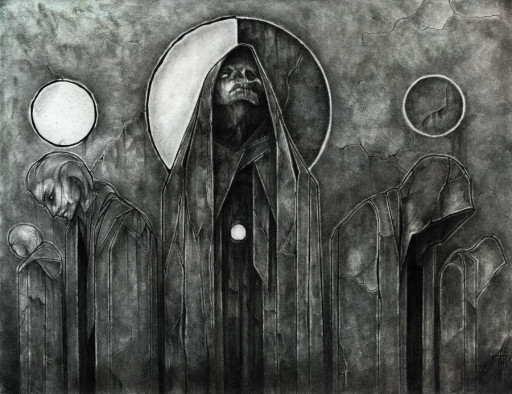
In ancient times dwelled a god so evil, so harmful to the multiverse that deities of all alignments bound him away for eternity. Tharizdun is the god of Eternal Darkness, Decay, Entropy, Malign knowledge, Insanity and Cold. Also called The Chained God, his symbols are a dark spiral rune and a two-tiered inverted ziggurat known as an obex.
Although Tharizdun has been imprisoned, he’s kept a good portion of his powers, having a divine rank of 11 (out of 20). He acts mainly by the work of his cultists, with whom he communicates through dreams and bouts of madness.
The cultists of Tharizdun aim for the return of their god, making evil rituals and sacrifices prophesying the end of days. Some might call him the Elder Elemental Eye, or Elder Elemental God, but not all of them agree they are the same entity. Maybe it’s all just part of the god’s plan…
- He is considered dangerous to the existence of the entire multiverse, being also called the ultimate doom, the Armageddon trigger, patron of madmen, the hopeless, and the unspeakable vile;
- In an attempt to avoid his return, the gods destroyed his temples and all memories of him. Still, his cult lives and they know someday he is meant to return;
- All of his worshippers are mad, and they only wish to release him from his exile. And they are capable of everything in order to achieve their goal.
- Tharizdun is the ultimate representation of evil, the enemy by itself, the typical archvillain;
- He resembles Cthulhu, the famous elder god described in H. P. Lovecraft stories. The stories about mad cultists of an ancient evil being contacted through their dreams and the return of the Herald of Doom are just the same;
Being a god of immense power, Tharizdun cannot be fought directly. His presence as a villain comes from the acts of his cult, as represented in The Forgotten Temple of Tharizdun, and Return to the Temple of Elemental Evil. Still, he is a fascinating evil entity to use as a central piece of many D&D stories.
18. Iggwilv, the Witch Queen
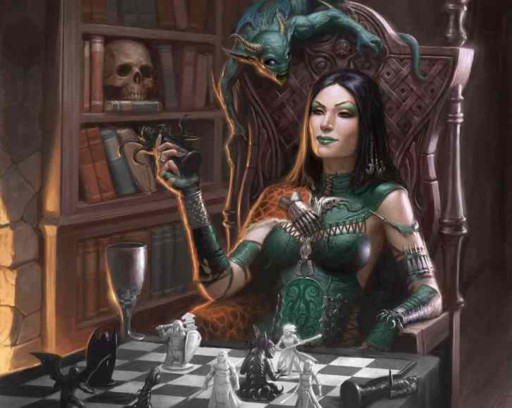
If there is a type of villain that I particularly adore is the seductive bitch witch. And Iggwilv fulfills perfectly that role. She was a disciple of Baba Yaga and Zagyg, a member of the Company of Seven (under the name of Tasha), a consort of Graz'zt (another one?), the mother of Iuz, the author of the Demonomicon, a ruler of the Perrenlands, and a rival of Demogorgon. What else can one desire in a villain?
Her story is long, as is resumed here. The most interesting about the witch is how manipulative and intelligent she was, and the great influence she had upon the world. She is a sorceress of great power, possesses a vast amount of magical artifacts and had simulacrums of herself walking this world. She is also allied with demons (or she directly controls some of them), and she can spy on the Abyss through the Iron Flask of Tuerny, which contains a portion of Demogorgon’s Essence.
- As a disciple of Baba Yaga and, later, the archmage Zagyg, she is a sorceress of immense power and knowledge;
- After having a complex relationship with Zagyg, Iggwilv and the wizard imprisoned the demon prince Fraz’Urb’luu, from whom she learned several dark secrets;
- Iggwilv stole from Zagyg the Tome of Zyx, which she later modified to become the famous Demonomicon;
- With the power of the Tome of Zyx, she summoned and imprisoned the demon prince Graz'zt, who revealed her the secrets she wrote to the Demonomicon, and forcedly became her lover;
- From her relationship with Graz'zt, Iggwilv gave birth to Iuz, the Evil - another of the great villains on this list;
- She is featured in several books, magazines and adventures of the D&D universe;
Her list of deeds is long, but one thing is certain: Iggwilv craves for power and knowledge, and would manipulate everyone on her path to do have it. She’s not been seen for the last decades, and many conjecture if she still lives.
There are no official Iggwilv’s stats, except for an exaggerated homebrew version of her.
17. Fzoul Chembryl, High Priest of Bane
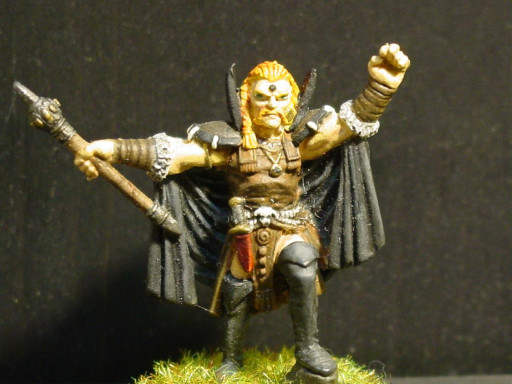
One of the most important and easily recognized names of the Forgotten Realms Campaign Setting, Fzoul Chembryl was the high priest of Bane - the cruel god of Tyranny - and one of the leaders of the black network, the Zhentarim. Highly dedicated to the service of Bane, Fzoul was rewarded by his god by becoming his Exarch after death. He now has the powers of a demigod (whose sphere of influence is service to evil).
Extremely ambitious and intelligent, Fzoul started his career as a common priest of Bane, but thanks to his schemes and skills he quickly became the High Priest of the church. He then joined the Zhentarim, still under command of Manshoon. After allying with Lord Orgauth, Fzoul Chembryl managed to kill and remove Manshoon from the black network’s leadership.
Fzoul Chembryl turned the organization into a great cult to Bane, which was cause of conflict among its members. The arch priest had to fight the worshippers of Cyric (Bane’s rival), as well as the many clones of Manshoon that arose after his death. He finally died fighting the shadovar in the name of his god, for which he was largely rewarded with the status of an Exarch.
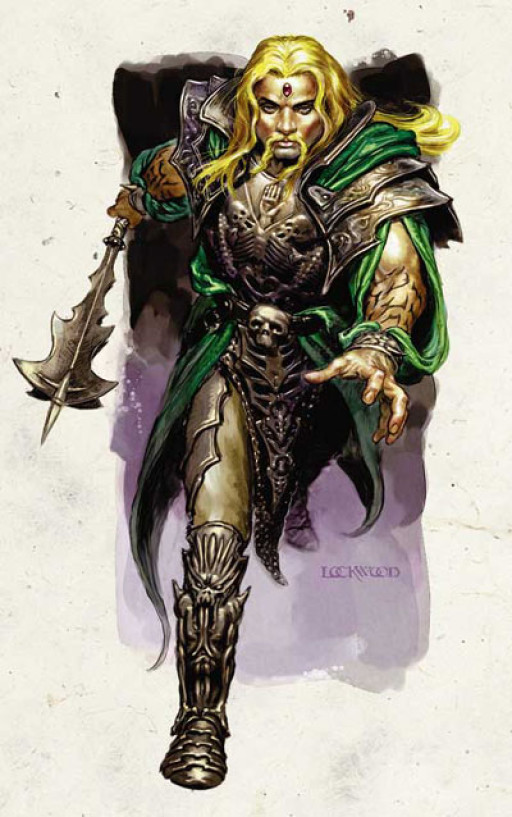
- As the High Priest of the church of Bane, Fzoul enjoys many divine and political powers;
- When he was master of the Zhentarim, Fzoul could be considered one of the most powerful men in all of Faerûn;
- Fzoul has access to several magic items and artifacts, being a very resourceful enemy;
- He forged the Scepter of the Tyrant’s Eye, a sentient artifact that could trap the souls of those slain by it;
Fzoul Chembryl was described in the 3rd edition as a Cleric 17/Hierophant 2 with a challenge rating of 23. Being so powerful and reliable, Fzoul had no fear to get his hands dirty and solve problems personally, which usually caused goosebumps on unsuspecting player characters.
16. Ashardalon
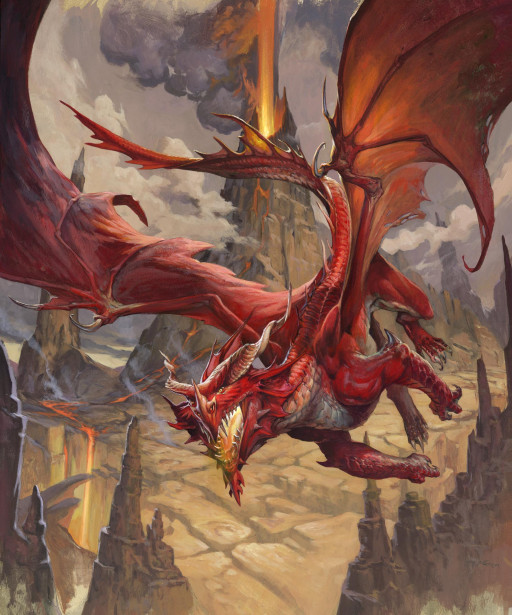
Ashardalon is one of the, if not the most ancient and powerful red dragons from D&D. He appeared in several modules, either as a main enemy or as a force behind all the trouble, and is considered one of the most memorable dragons to ever exist. His memory lives now on a board game called Wrath of Ashardalon.
About a millennium ago, Ashardalon reigned supreme over the land. Such was his power that people worshipped him as a god. With his hungry for power and destruction, Ashardalon one day slew a cult of druids affiliated with the Church of the Elements. The only survivor, a druid named Dydd the Wise, later came back to defeat the dragon, tearing off his heart from his body.
Ashardalon managed to stay alive by going to the Abyss and replacing his heart with A BALOR named Ammet, the Eater of Souls.
After centuries, Ashardalon’s demon-heart began to fail and to stay alive Ashardalon traveled to the Positive Plane and broke into the Bastion of Unborn Souls, where he fed under waterfall of souls and started a multiversal cataclysm called “soul sickness”, in which bodies where thrust into existence without a soul.
Ashardalon’s story is spammed across several modules, including The Sunless Citadel, The Bastion of Broken Souls and Heart of Nightfang Spiral. He is one of the most classic villains, and has certainly had some participation in one of your adventures.
- He is one of the most powerful and ancient dragons in D&D’s history;
- He replaced his heart with a balor in order to survive after his true heart was removed;
- His heart was brought to the Nighfang Spiral, where his cultists worshipped him, and became the lair of Gulthias, a cultist who later became a vampire to be able to wait for his master’s return;
- Ashardalon almost became a god, if it weren’t for the actions of one of Dydd’s heirs;
- One of Demogorgon’s head, Aameul, tried to use Ashardalon as a receptacle to his essence to keep him alive after killing the other head, his brother Hethradiah;
Being a very ancient Dragon, Ashardalon is tremendously powerful and is a threat even to epic level parties. His stats are described in The Bastion of Broken Souls, but I could find a brief copy of it here.
15. Zuggtmoy, Demon Queen of Fungi

The Demon Queen of Fungi, also called Lady of Rot and Decay, Zuggtmoy if one of the demon lords of the Abyss. She shares a layer in the Abyss with Juiblex, the Faceless Lord (demon lord of slimes and oozes), where she has built her lair, Shedaklah, a gargantuan palace made of dozens of giant mushrooms. Zuggtmoy is always driven by an insatiable hunger to devour and destroy others.
The Demon Queen’s only desire is to spread her spores through all of the mortal world, turning the entire landscape into a single fungi realm of her own. Zuggtmoy’s spores have the power to mentally control the infected, which she can use as a tool to further spread her domains.
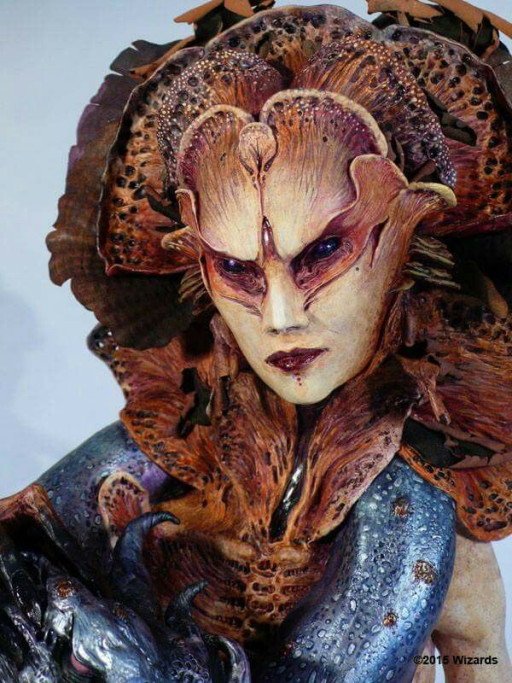
Zuggtmoy struggles to keep cults on the Material Plane, since worshipping fungi is not appealing to the human population. Many of her cultists, indeed, follow her unwillingly and unknowingly, since she also has fictitious cults which she manipulates to serve her wicked desires. True followers of Zuggtmoy are either mad academics and clerics, or mind-controlled slaves infected with her spores.
- Zuggtmoy is one of the demon lords of the Abyss, which makes her one of the most powerful entities in the D&D universe;
- The Demon Queen of Fungi seeks to spread her spores and dominate the entire Material Plane, turning all the land into a vast sea of fungi;
- She takes an important role in the Out of the Abyss adventure, having strong influence on the fungi of the underdark;
- Zuggtmoy has a rivalry with Juiblex (for their shared layer in the Abyss) and Lolth (for their strife for control of the Underdark);
- Her spores can create mindless servants to fight for her and spread her domain;
The Demon Queen’s stats may be found in the Out of the Abyss adventure book, as well as in the Mordenkainen Tome of Foes, being a Chaotic Evil fiend of CR 23.
14. Szass Tam, Zulkir of Necromancy

One of the most fearsome organizations in all of Faerûn is the Red Wizards from the magocratic nation of Thay. The Red Wizards were led by the Council of Zulkirs, eight powerful wizards representing each school of magic. Among this Zulkirs, the mightiest and most intimidating is by far Szass Tam, Zulkir of Necromancy and the ruler of Thay.
Szass Tam achieved eternal life through lichdom, and thus he is the oldest of the Zulkirs. The necromancer is also the commander of the Legion of Bone, an enormous army of undead led by his vampire and lich generals.
Besides being an undead, Szass Tam presents himself as a calm and cultured individual, and sometimes even pleasant. He is polite, but does not tolerate insults against him or the Red Wizards.
- Szass Tam is a Lich, and a powerful necromancer, commander of an army of undead and a nation of evil wizards;
- He has not only magical but also political power, influencing in wars through all of Faerûn;
- Tam conquered the rulership of Thay by challenging and destroying other Zulkirs in the past;
- Szass Tam is described as “always spinning more simultaneous intrigues than most Faerûnians have years in their lives”, being a master plotter with the infinite patience of a Lich;
- He also possesses a great amount of magical items and artifacts, being a very versatile opponent;
As a lich AND a Red Wizard at the same time, Szass enjoys huge amounts of magical power. His stats in 3.5 describe him as a CR 31 necromancer, but only homebrew versions of his 5e stats can be found.
13. Iuz, the Evil
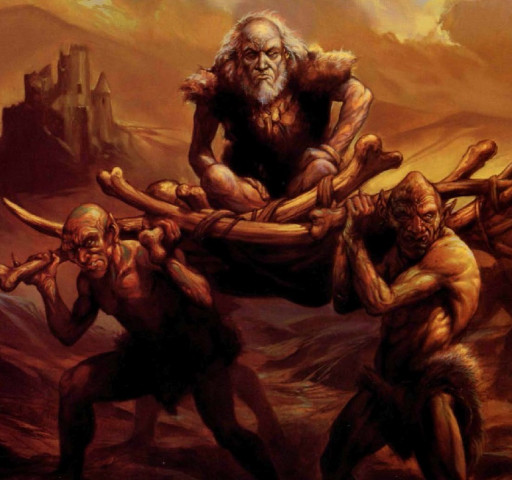
Also known as "The Old One", Iuz the Evil is the demigod of Deceit, Pain, Wickedness, Oppression and Evil, and his symbol is a grinning human skull, or a human skull with blood-red highlights. His other titles include Old Wicked, The Old One, His Most Profane Eminence, Lord of Pain, Fiend of the North, Child of the Evil One, Master of the Dread and Awful Presences and Iuz the Old.
Iuz is a half-demon born from the profane relationship between Iggwilv and Graz'zt. Besides being a demigod, he’s decided to make his home on Oerth (the planet of Greyhawk), where he rules the Empire of Iuz, a large realm in the northern part of the Flanaess.
Originally described as a very handsome Cambion, his form was split in two when Graz'zt attacked Iggwilv to free himself. One of the forms is an old man with a disgusting spittle that withers all that it touches, and the other is a hulking 7 feet tall red skinned demon.
- Iuz is the son of two of the greatest villains of all time, born as a half-demon and ascended to the title of demigod through acts of Iggwilv, Lolth, Zuggtmoy and Graz'zt;
- His soul amulet is kept in the Abyss by Zuggtmoy, the Demon Queen of Fungi, who is his ally and sometimes lover;
- His alliance with Graz'zt and Pazuzu allow him to summon hordes of minion demons to fight for him;
- A road of skulls lead to his capital, Dorakaa, which is not called City of Skulls without a reason;
- He aims to conquer, enslave and inflict pain and suffering to the entire world of Greyhawk;
Iuz stats are not available for 5e from any official version, but his stats for 3rd edition can be found in Dragon #294. He is described as a Cleric 20/Assassin 10 with Divine Rank 3, more than enough to make for a respectable enemy!
12. Kas, the Betrayer
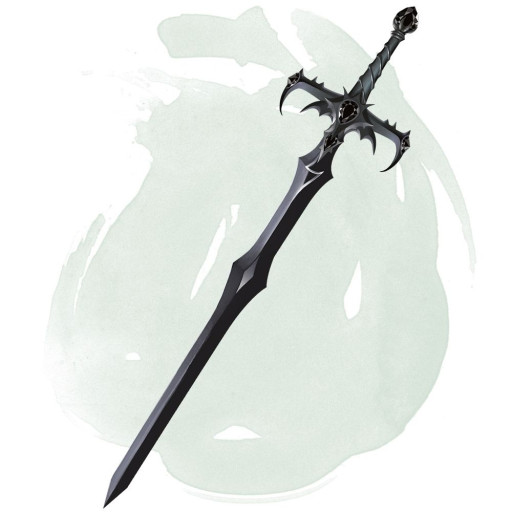
The stories of Kas and Vecna are deeply interconnected. Long ago, when Vecna was still a mortal, Kas was his most trusted lieutenant. He was rewarded for his services by Vecna, who gave him a sentient black-metal sword infused with tremendous power. Kas’ strength grew up, and so did his hubris, and the sword convinced him to betray Vecna.
Kas battled Vecna, and the fight was so ferocious that it left Vecna’s tower in ashes, and both enemies were flung across the planes. Only The Sword of Kas remained in the Material Plane to remember of his betrayal.
Kas’ main participation in the game comes through his sword, which can be acquired by a player looking like a very powerful artifact, just to turn him into a bloodthirsty warrior who can - and probably will - betray his friends at one point.
- Kas is also known as The Blood Handed, and the First Vampire, as some stories tell that the god Nerull blessed him with vampiric powers as a reward for hurting Vecna;
- Kas is considered one of the most powerful humanoids who is not a deity;
- According to the 4th edition files on Kas, he travels across the planes, having a kingdom in Shadowfell and a hidden dominion within the Astral Sea;
- Only a creature attuned to the Sword of Kas might be able to destroy the Eye and Hand of Vecna, since it was Kas the responsible for their “creation”;
- He commands armies of living and undead followers, and is worshipped by humans and other mortals alike.
The Betrayer’s stats can be found for the 4th edition at Wizards official website. The Sword of Kas is described in the Dungeon’s Master Guide, at the artifacts session, and is a sentient item with Chaotic Evil alignment whose sole purpose is to destroy what remains of Vecna and his cult.
11. Manshoon, the Manyfaced
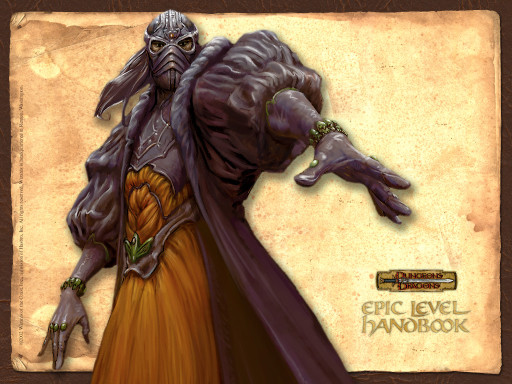
One of the most popular mages in the Forgotten Realms campaign setting, Manshoon was the founder of the Zhentarim, until he was slain by Fzoul Chembryl and Lord Orgauth in 1370 DR. Things get interesting from this point on, since Manshoon’s paranoia led him to create dozens of clones of himself, all of which awoke at the moment of his death.
Rumours say that more than 40 clones have been created. Nobody knows exactly how many, and how all of the clones were awoken at the same time. As an effect of the spell, the clones started to try to find and kill each other, an episode known as the Manshoon Wars.
Three of the clones survived in the end. One of them came back to Zhentil Keep, to serve as a lieutenant to Fzoul Chembryl (and was killed during the Netherese invasion). The second one took refuge in the Undermountain with Halaster Blackcloak, but later died after the Spellplague events. The last one had awaken as a vampire and became the leader of the Night Masks of Westgate. He raised some undead followers and rebuilt the forces of the Zhentarim, although they’re just a shadow of their former power.
- Manshoon is so powerful that he is one of the few mages in Faerûn who Elminster would not like to confront directly;
- He created several clones of himself, who awoke and tried to kill each other after he died;
- Through his cleverness and manipulations, he took control of Keep Zhentil and founded a guild of assassins to protect himself, which later became the Zhentarim;
- One of his clones is a vampire, commander of several thralls and know as the Night King;
Manshoon’s story is better described at the WotC official website. His stats for the 3.5 edition can be found in the Forgotten Realms book. There are many materials on the internet bringing lots of interesting information about Manshoon, as he is such a classical villain of Faerûn. He was recently featured in the adventure Waterdeep: Dragon Heist, as one of the antagonists behind the events in the city.
10. Acererak
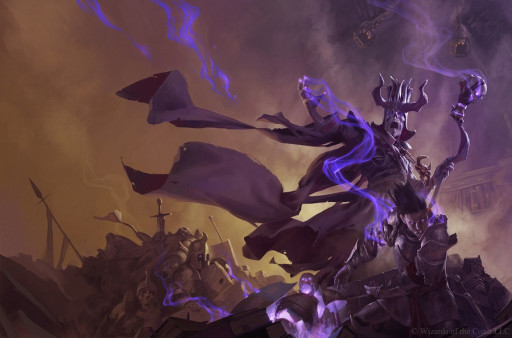
The iconic lich featured in the Dungeon Master's Guide cover is not only a mighty wizard and a former apprentice of Vecna, but also the creator of the infamous Tomb of Horrors, a more-than-classical module who is certain to have killed hundreds of adventurers since its publishing.
Acererak lures unlucky explorer into his deadly dungeons with promises of holding invaluable treasures, only to trap their strong souls and feed his plans of ascending to power and infesting the world with undead.
He has recently appeared in Tomb of Annihilation (but only in the cover), but is present in several other adventures published before. Although he doesn’t play a role of a final boss, Acererak is always a hidden force behind the events of these adventures, usually diabolically watching as the explorers die in innumerable ways to his deadly traps.
- Some editions describe him as being a half-fiend before becoming a lich;
- As an apprentice of Vecna, Acererak has learned secrets from the first and most famous lich in the world;
- Acererak has a demesne in the Negative Energy PLane (or Shadowfell, according to the edition);
- His phylactery has never be found, which makes him impossible to truly destroy;
- Tomb of Horrors was such a deadly dungeon that few parties have managed to finish it with success. It was created by Gary Gygax to challenge overconfident players and crush their expectations with cruelty and a touch of sadism;
When faced directly, Acererak is certainly powerful. Although some DMs think his stats for 5e described in Tomb of Annihilation are too weak (or even wrong), he is still a formidable opponent of CR 23, and can deliver a beat if that’s what your party needs.
9. Lord Soth, Knight of the Black Rose
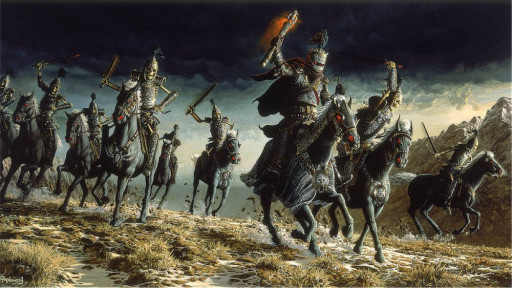
Lord Soren Soth of the Dargaard Keep, the Knight of the Black Rose, was in life a Knight of Solamnia, who fell to become a Death Knight and one of the most memorable villains of Krynn, the world described in Dragonlance.
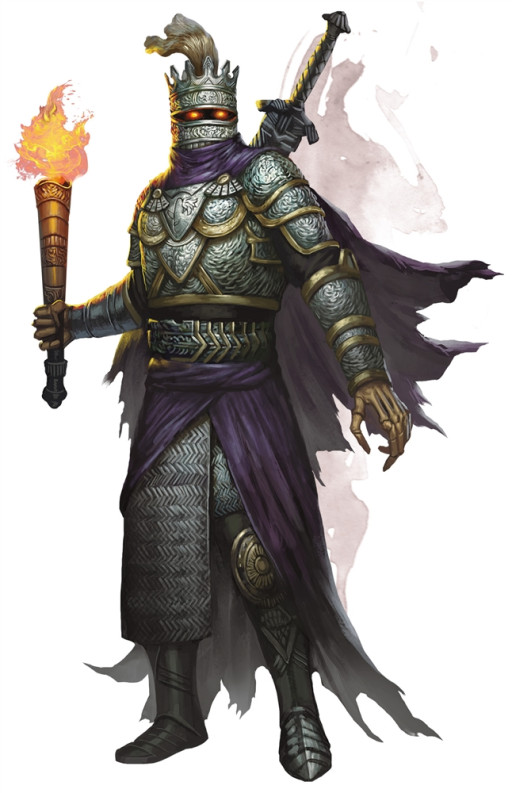
Lord Soth is strong due to his undead abilities, but also skilled in the sword thanks to his training as a Knight of Solamnia. He fled the Order of the Rose to Dargaard Keep after killing his wife and having a bastard child with an elven priestess. His heart grew darker with each day while being besieged by the other knights, until he accidentally killed his new wife and child. The priestess, before dying, cursed him, which caused the entire keep to burn and killed Soth and his servants. Lord Soth raised again as a Death knight, and his servants as undead warriors.
The Death Knight served the Blue Lady, Kitiara, in the name of Takhisis, the Dragon Queen (a villain goddess of Dragonlance, much similar to Tiamat), and became one of the main antagonists in the War of the Lance.
Lord Soth was later brought to Ravenloft where he served and fought Count Strahd von Zarovich, although there is controversy about this facts.
- Lord Soth was a fallen Knight of Solamnia, highly skilled with the sword and very honorable;
- Even after becoming an undead villain, he still kept his sense of honor and pride, and never attacked an unarmed enemy or ambushed them from behind;
- He commanded legions of undead who follow him in his path of destruction;
- Lord Soth had an appearance on several novels and adventures based on the Dragonlance setting and is one of the most classical villains in Dungeons and Dragons;
- He was used as the quintessential Death Knight in the Monster Manual (5e);
- In the end, Thakisis returned his mortality and crushed him under the rubble of his castle as a form of punishment. Lord Soth somehow managed, after being such an evil being, to restore part of his honor before dying;
Lord Soth can be used as an exemplary Death Knight (a CR 17 monster), or you can check some of the homebrew stats created for him on the internet. All in all, Lord Soth was always considered one of the greatest villains of all time. Such a classic!
8. Graz’zt, the Dark Prince
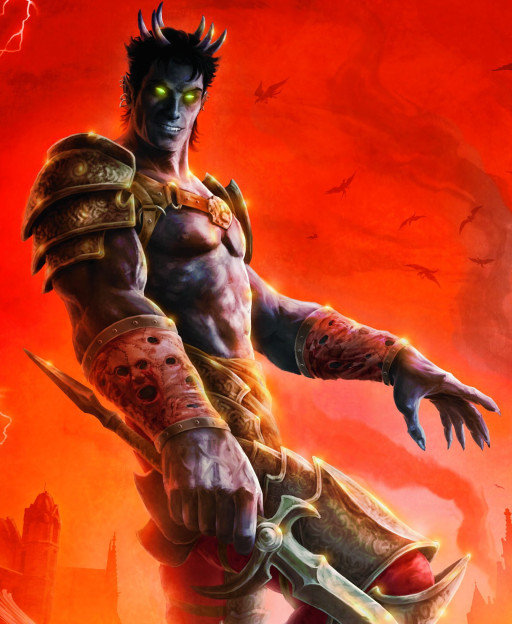
If you’ve been reading this list from the beginning, you must probably have heard this guy’s name about a dozen times already. Graz’zt is one of the Demon Princes, standing amongst the most powerful demon lords of the Abyss. He is also one of the oldest and most recurrent characters in the D&D universe, with participation in many adventures and stories (as you might have noticed).
The origins of Graz’zt are uncertain, some academics believing he was a former archdevil who conquered three layers of the Abyss in the Blood War and then betrayed Asmodeus, while others believe he is a child of the Pale Night, the Mother of Demons (and one of the most ancient entities in the multiverse). Truth is, Graz’zt is now a powerful Demon Prince who rules not one, but three layers in the Abyss.
The Dark Prince is a skilled politician and a master tactician who is always plotting and scheming against his innumerable enemies. He prefers guile and seduction as weapons for manipulation, but he can also be a fierce fighter with whis acidic sword, the Wave of Sorrow. Graz’zt is described as a handsome demon with ebony skin, very erotic and depraved. His greatest ambition is to defeat his ultimate rivals, Demogorgon and Orcus, and become the true Prince of the Abyss.
- Graz’zt is one of the oldest villains in D&D, his most recent appearance being in Out of the Abyss;
- Graz’zt has had relationships with Eclavdra, is the father if Iuz, and is both a lover and an enemy of Iggwilv (who he helped creating the Demonomicon);
- He is worshipped by Lamias, escorted by two powerful Mariliths, and has at his service some powerful Bodaks. Witches make sexual pacts with him, giving birth to many tieflings. Many of his allies, brothers and sisters are also demon lords;
- His realm extends to three layers of the Abyss and hasremained so large for centuries. When at his palace, the Dark Prince keeps many attractive demons at hand, to feed his ferocious sexual appetite.
- He has many powerful enemies, which include Demogorgon, Orcus, Yeenoghu and Baphomet (among many other demon lords);
- He betrayed and kidnapped the goddess Waukeen while his daughter Thraxxia impersonated her, wanting to become the new goddess of wealth;
In combat, Graz’zt use his innate spells to confuse and control his enemies minds, and his mighty sword Wave of Sorrow to dilacerate those who resist. His stats can be found in the Mordenkainen’s Tome of Foes and in Out of the Abyss. When he is not in combat, he uses his cunning and sensuality to manipulate his adversaries and conquest his objectives.
7. Orcus, the Blood Lord
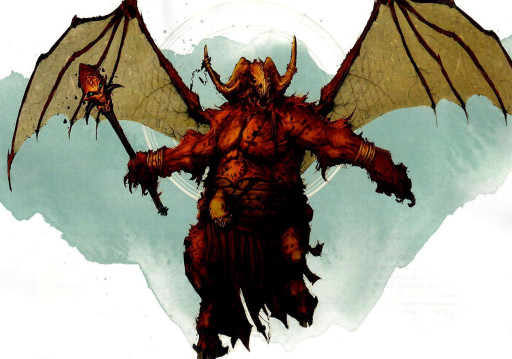
Orcus is the Demon Prince of Undeath. He is one of the most powerful demons in the Abyss, second only to Demogorgon, his greatest rival. He hates all forms of life and existence and seeks to destroy all of them, leaving in place only the peace and quiet of the dead.
Orcus is one of the oldest and most successful characters in the D&D universe, being present in several adventures, the most recent of them being Out of the Abyss. He has a long story behind his origins, having been killed and then returned to power after a series of plots and betrayals.
Orcus owns a very coveted artifact, the Wand of Orcus, a sentient chaotic evil item whose sole purpose is to satisfy Orcus’s desire to slay everything in the multiverse. The wand is described as “cold, nihilistic, and bereft of humor”, and Orcus lets it fall into mortal hands from time to time just to see the unleashed chaos.
- Orcus is one of the most powerful Demon Princes, rivaling Demogorgon and eternally fighting him for the throne.
- Orcus hates all forms of life and seeks to kill everyone in the multiverse, leaving behind only a horde of undead loyal to him;
- His realm in the Abyss is a frozen land crowded with all sorts of undead, including several liches and death knights;
- He is one of the oldest villains in the game, and the second Demon Prince to ever feature in an adventure (after Lolth). In The Throne of Bloodstone, adventurers have to invade his palace and steal his wand to destroy it, a task that takes them from level 18 up to 100 (yes, a hundred)!
- Orcus also acts as a backstage villain, being worshipped by mad cultists and mighty necromancers, vampires and liches alike;
There’s just so much material about Orcus that it’s hard to cover them all. The Lord of the Undead is described in both the Mordenkainen’s Tome of Foes and Out of the Abyss books, being a CR 26 fiend who can easily suck the life out of your heroes corpses.
6. Vecna, the Undying King
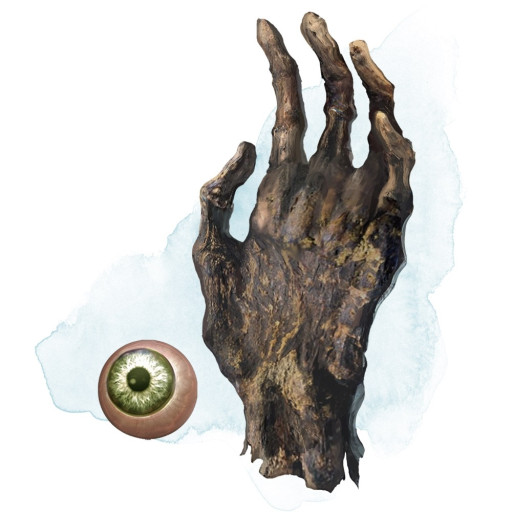
Present since the early editions of the game are the artifacts known as The Eye and Hand of Vecna. They once belonged to the infamous lich Vecna, maybe the most powerful necromancer to have ever stepped on the Material Plane. He reigned supreme on Oerth until his lieutenant Kas betrayed him and severed the parts off his body.
Vecna was first mentioned in a supplement to the first edition of Dungeons and Dragons. Initially, only his Hand and Eye were cited, but on later editions Vecna appeared personally as an antagonist to some adventure modules. He finally became a god in third edition, remaining so until modern versions of the game. His artifacts, still, are always present.
Vecna’s evil influence upon the world is now exerted through his cult, and by the bearers of his Hand or Eye. Both items can be found separately, but together they are much stronger. His cultists organize in cells named after Vecna’s body parts. They pray and fight for an ascension of Vecna among the gods, until he remains as the only deity in existence.
- Vecna was a powerful lich who conquered a vast empire;
- He learned the secrets of lichdom from no other than the demon lord Orcus;
- His reign ended when he was betrayed by Kas, who cut off his hand and eye;
- The Hand and Eye of Vecna are powerful artifacts present since the first edition of Dungeons and Dragons;
- Using the Eye of vecna might occasionally allow Vecna to rip off your soul, devour it and take control of your body like a puppet;
- Using the Hand of Vecna will constantly suggest you to commit evil deeds;
Whilst The Hand and Eye of Vecna can easily be found in the Dungeon Master’s Guide, the lich’s stats were never officially presented, except for some homebrew editions. The most interesting usage of this villain in a campaign is by acting through a minor villain empowered by the artifacts (and maybe just acting like a puppet to the real Vecna).
5. Demogorgon, Prince of Demons
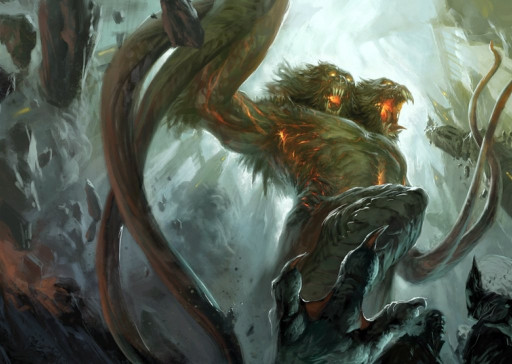
If you are reading this text in the early XXI century, high are the odds that you have heard about Netflix, about the series Stranger Things and about its antagonist, the Demogorgon. The monster from the series was inspired on the D&D classical arch demon, as revealed on the first minutes of the first episode. Being such a cultural phenomenon is certainly worth a title among the greatest villains of all time, isn’t it?
Demogorgon (not the Demogorgon) is, like Orcus and Lolth, one of the most ancient and classical demons from Dungeons and Dragons. He is the self entitled Prince of Demons, the most powerful of them all, and a pure embodiment of chaos, madness and destruction. Also called the Sibilant Beast and Master of the Spiraling Depths, Demogorgon seeks to “corrupt all that is good and undermine order in the multiverse, to see everything dragged howling into the infinite depths of the Abyss”.
His ultimate goal is to wipe out of the multiverse all forms of life and existence, including his own cultists. His two heads, Aameul and Hathradiah, represent different personalities and seek to kill each other. If Demogorgon ends the world, they might devour each other and leave behind nothing but an empty cosmos.
- Demogorgon is the mightiest of all Demon Lords, a being of unfettered violence and rage whose mere presence brings madness to the world;
- The Prince of Demons is highly paranoid about threats to his rule, and meets every challenge with overwhelming force before they become a serious problem;
- His worshippers include (among mad men) troglodytes, kuo-toa and the intelligent manta ray race known as Ixitxachitl;
- He is one of the main antagonists in the Out of the Abyss adventure (and the scene in which he emerges for the first time is awesomely terrifying);
- Demogorgon is maybe the most popular of D&D’s villains, thanks to Stranger Things (Tiamat being the other competitor).
In combat, Demogorgon is a force to be feared and respected. He is not afraid of unleashing all of his strength upon his foes, while maddening weak minded opponents with his insanity gaze. He is described in Out of the Abyss and Mordenkainen’s Tome of Foes, and is a CR 26 fiend ready to drain all of your hit points in a flash.
4. Asmodeus, Supreme Lord of the Nine Hells
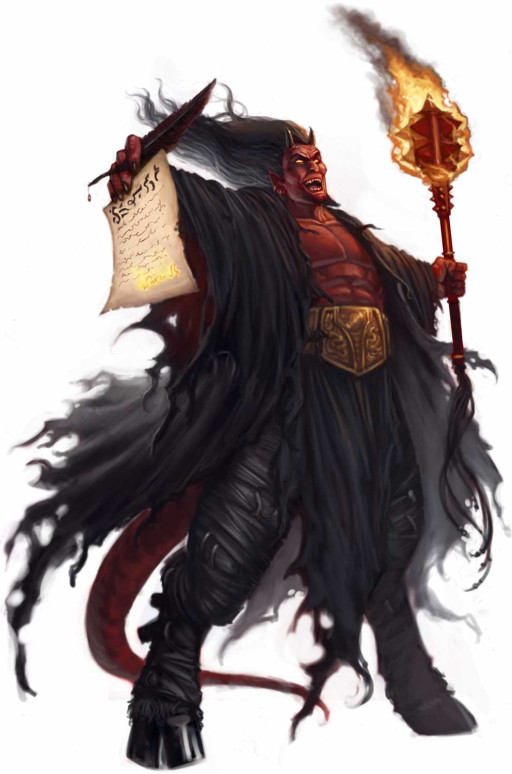
When Asmodeus argues that all the souls his devils collected served a noble purpose fighting the hordes of the Abyss, protecting the multiverse from complete destruction and chaos, and that all of those souls were gathered following strict laws signed and agreed by the mortals, few entities in the multiverse can argue back against him. Such are his wits that he once walked unharmed into Mount Celestia (the lair of his enemies) using only his cunning words.
Asmodeus is the Supreme Lord of the Nine Hells, also known by many other titles (like Lord of Lies and Prince of Evil), and he is the most powerful and influential of the Archdevils in Hell. He reigns supreme in the 9th layer, Nessus, plotting and scheming against gods and cosmic entities with the ultimate goal of becoming the true master of the entire cosmos. Asmodeus believes he is the only one strong and smart enough to create a perfect world filled with law and order, where no wars would ever be fought again - all according to his view of reality, of course.
When Asmodeus was put to judgement before Primus - the leader of the modrons and an impersonation of absolute justice - so big was the number of angels testifying against him that Primus ran out of patience (after several weeks and the angels fighting among themselves for the right to talk). The angels were rebuked, but Asmodeus was not punished.
The Archdevil is so important and powerful that he doesn’t bother signing contracts with mere mortal souls: he aims for greater entities, heroes and gods to become his new servants in the Nine Hells.
- Asmodeus is just the most powerful devil in Hell, master of all other devils, and a magnificent schemer who loves to use his cunning to win his fights for him before they even begin;
- He holds the Ruby Rod, an artifact given to him by Primus to ensure devils would always obey to their contracts, otherwise they’d be inescapably punished for any breeching;
- Asmodeus aims to become the supreme ruler of the entire multiverse, and believes he is the only one with the intelligence to do so. Every other entity is weak or just incapable;
- The Prince of Evil doesn’t need to gather mortal souls, thus he seeks contracts with powerful cosmic entities;
- Nobody has ever outsmarted Asmodeus, and he’s thwarted every conspiracy against his rule;
- Asmodeus is still a Lawful entity, an embodiment of Order, and is always polite, eloquent and reasonable. Indeed, he sometimes doesn’t even look like an evil creature at all;
Asmodeus knows to be one of the mightiest creatures in the multiverse. His stats were never officially published, but some homebrew versions exist, bringing him as a CR30 fiend, enough to challenge some gods if he ever wants to.
3. Lolth, Queen of Spiders
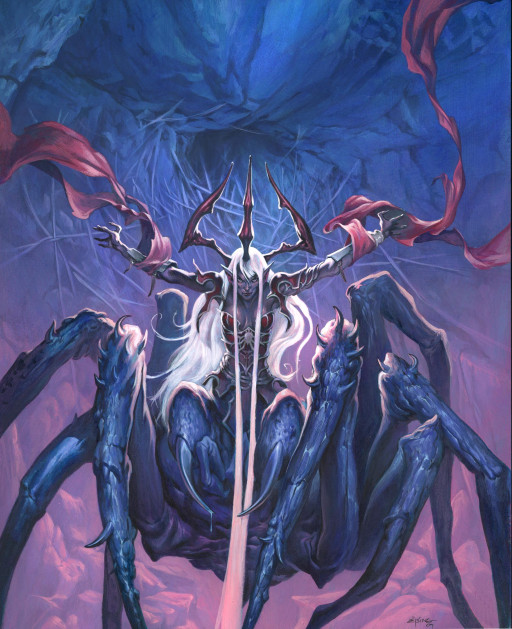
As it happens with the Illithid, the drow are also an evil race exhaustively used as main villains in several adventures in D&D. And if the drow are the bad guys to ruin everybody’s days, Lolth is the true antagonist behind the dark elves. The Queen of the Demonweb Pits is not only a Demon Lord, but the goddess of the drow, spiders, trickery and lies. She is a cruel mistress who encourages a matriarchal society of slavery and dominance over the weakest.
Lolth spends most of her time fulfilling her duties as a goddess, giving little importance to the machinations and plots of other Demon Lords. Her lair is a plane-spamming web where she brings her most loyal servants to be rewarded, or her most hated foes to be punished. The Dark Mother, as she is also called, is a very important piece in the history of elvenkind and the drow.
The Queen of Spiders is also one of the oldest and most detailed villains in the game, having been firstly mentioned in Descent into the Depths of Earth and more fully described in Vault of the Drow. She was the main antagonist in Queen of the Demonweb Pits, and, nowadays, plays an important role in Out of the Abyss, although she doesn’t appear as one of the enemies to be faced.
- Lolth is one of the oldest and most famous villains in the D&D universe, both as goddess of the drow and as a Demon Lord;
- She lives in a plane entirely covered by her demonwebs;
- She is a cruel mistress who teaches her followers cruel lessons. The entire society of the drow is based on slavery and dominance, and Lolth doesn’t tolerate weakness;
- Lolth is thoroughly detailed on several books, adventures and webpages, being one of the favorite villains of both players and DMs;
- Lolth consider spiders as a sacred animal, and unleashes her fury upon those who mistreat or kill them;
- Besides being mother of the drow, she is also creator of the Drider, a hybrid drow-spider monster always present in the Monster Manual;
Lolth stat block is never described, since it’s not needed. She mainly acts through her worshippers, and holds all the powers of a goddess. Remember yourself not to kill the next spider you find in the caves, or the Dark Mother will find a way to punish you for getting in her way.
2. Tiamat, the Dragon Queen
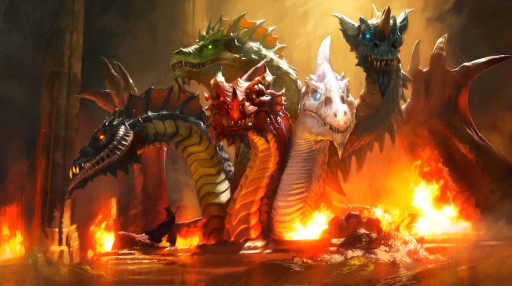
If you’ve ever watched the Dungeons and Dragons TV series, you know who Tiamat is. If you’ve played Horde of the Dragon Queen and the Rise of Tiamat, you know who Tiamat is (of course). If you’ve been playing Dungeons and Dragons for more than a year, you should know who Tiamat is. More than just a villain, a cultural phenomenon, Tiamat is probably the most easily recognizable enemy to ever feature in the game.
Tiamat, the Dragon Queen, is the evil goddess of chromatic dragons and enemy of her brother Bahamut (god of metallic dragons). She is a tyrannical mistress with an arrogant, greedy and vain personality. She loves hoarding treasures brought by her servants, and keeps one consort of every type of chromatic dragon at all times.
Tiamat is the main force behind the events in Hoard of the Dragon Queen and the Rise of Tiamat, as she is trying to come to the mortal world summoned by the Cult of the Dragon. And if you’re unlucky, you have to face her for real by the end of the campaign.
- Tiamat is probably the most famous dragon (and villain) in the history of D&D;
- She was also mentioned at Forbes as “the most fearsome dragon in D&D’s history”;
- Tiamat made several appearances in the Dungeons and Dragons TV series as a brutal force of destruction, being feared even by Venger;
- The Dragon Queen is cruel, tyrannic, arrogant, greedy, vile and vain, and so are her worshippers;
- She is present since the first supplement to the original Dungeons and Dragons, Greyhawk (1975);
- She has several deals with devils and has a lair in Avernus, the first layer of Hell;
No matter the time, Tiamat is always hungry for the destruction of new realms and the amassing of immense treasures. She is certainly an utmostly classical villain who can be inserted in several ways into any campaign. Should she ever be personally faced, Tiamat is one the most terrific foes any party will ever have the displeasure of fighting. Beware her dangerous breath!
1. Count Strahd von Zarovich, the First Vampire
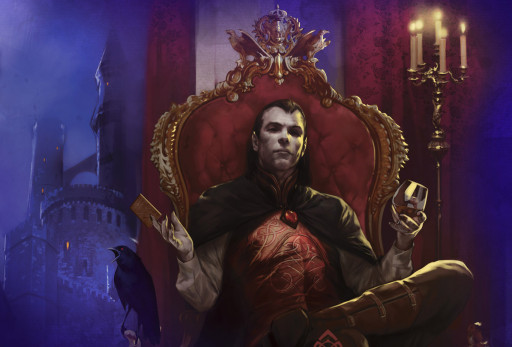
In 1983 a module for AD&D called Ravenloft was published, bringing the story of a village around a sinister castle governed by an evil vampire called Strahd von Zarovich, and his obsession with his beloved Tatyana (and her reincarnations). The adventure grew so popular through the years, that it was recently remade for 5e, under the title of Curse of Strahd. Castle Ravenloft and the realm of Barovia gave origins to the campaign setting Ravenloft, and Count Strahd features as one of the most charismatic and unforgettable villains of all time.
Count Strahd was a strong warrior in his father’s armies, and from the lands he conquered in war he created the land of Barovia, on which he then built Castle Ravenloft. Life after war changed the warrior into a dark person, so he decided to make a pact with Dark Powers of the shadowfell in order to achieve eternal life.
Strahd then fell in love with a beautiful lady of the village, Tatyana, but she loved his younger brother Sergei instead. Strahd murdered his brother and drank his blood, sealing his pact with the Dark Powers and becoming the first vampire. Tatyana fled from him, and threw herself from the walls of the castle, dying.
Today, Strahd is cursed to live trapped in Barovia, which was transported to a demiplane surrounded by fog, whilst being tormented by the repeatedly resurrected soul of Tatyana, a love he is forced to reunite with and lose eternally.
- Strahd is the main antagonist in Curse of Strahd, a remake of the much popular module Ravenloft which originated the campaign setting of same name;
- He is a very charismatic character, although evil and soulless. He believes there’s no salvation for himself, and enjoys tormenting the people of Barovia;
- So popular is Strahd that he also appears in several novels and videogames;
- Strahd broke the stereotype of a mindless monster in a dungeon and became one of the first vampires with a true personality in the game;
Despite how interesting the Count might be, he is not as powerful as other villains on this list. His stats in Curse of Strahd depict him as a CR 15 enemy. Sometimes, the most memorable villains are not necessarily the most powerful ones. This is certainly true with Strahd von Zarovich.
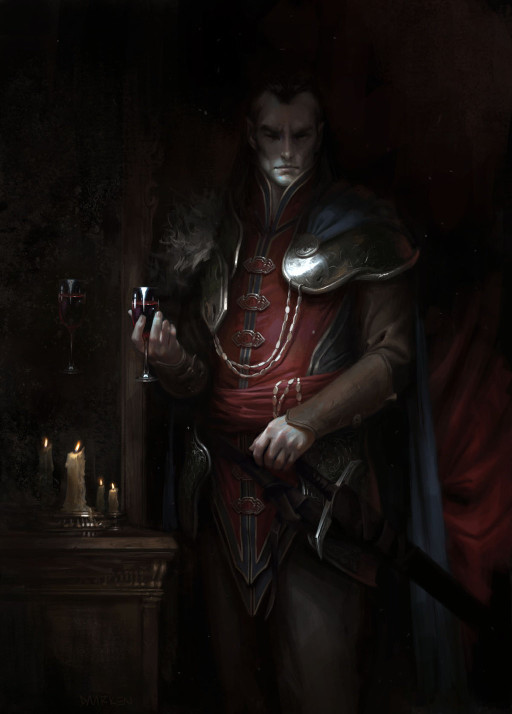
The Dungeons and Dragons universe has some really fascinating villains, but sometimes our favorites are the ones our DM created just for our campaigns. Did you miss someone on the list? Who was the most memorable villain you ever faced? Tell us in the comments!
You may also be interested in:
- 32 Most Interesting Facts About Dungeons and Dragons!
- 25 Best D&D Games for PC That Every Fan Must Play!

